

Urgent Care CPT Codes Guide (2024)

Urgent Care Centers need to be operating at the elite level, ensuring accurate reimbursement and communication between healthcare providers and insurance companies for a start.
According to research, In 2024, urgent care clinics managed approximately 89 million patient visits, representing 29% of primary care visits and about 15% of outpatient visits in the U.S. The efficiency of these clinics is highlighted by the fact that over 70% of patients wait less than 20 minutes to see a provider, with 85% being treated within an hour.
So we’ve come up with a small guide on everything you need to know about Urgent Care CPT Coding.
Table of Contents
Understanding cpt codes for urgent care.
It is important to note that CPT codes are regularly updated to reflect advances in medical technology and changes in healthcare practices.
Staying up-to-date with these changes is crucial for accurate billing and avoiding potential reimbursement delays and for urgent care its no different.
CPT codes are a numerical system used for describing medical services and procedures. They are essential in urgent care settings for ensuring accurate and timely reimbursement from Medicare and private insurers. Correct application of these codes is critical to avoid denied claims and underpayment
Common Urgent Care CPT Codes
When it comes to urgent care CPT codes, there are specific codes that are commonly used to represent the services provided. These codes include but are not limited to:
- 99201-99205: Evaluation & Management of New Patients
- 99211-99215: Evaluation & Management of Established Patients
- 12001-13160: Wound Repair
- 10060-10180: Incision & Drainage
- 20525-20553: Foreign Body Removal
- 29000-29799: Splint and Cast Applications
These codes, along with many others, allow healthcare providers to accurately document the medical procedures performed in urgent care settings.
Exclusive ‘S’ Codes for Urgent Care
Both Urgent and Primary Care have been using Codes from Healthcare Common Procedure Coding System (HCPCS) . These codes are denoted with the letter “S” and are as follows
The S9083 Code covers a fee for any services provided, operating on a global fee scale. This may require a hospital billing to use, the MCO’s playing a crucial part
The S9088 Code is used for the Evaluation & treatment of Medical conditions in conjunction with an E/M code. The code allows centers to be reimbursed for a portion of the increased cost of providing immediate care
Changes to Urgent Care CPT Codes in 2023
- Notable updates include a new prolonged services code 99417 for visits lasting over 59 minutes, revised office/outpatient E/M code descriptors, and changes in E/M code level selection based on medical decision-making or total time.
- Procedure code changes include revised wound repair codes, new codes for antibiotic and contrast injections, and updates for neurostimulator codes.
- In laboratory and diagnostic testing, new codes have been added for cell enumeration and genomic sequencing, along with revisions to microscopic urinalysis codes
Best Practices and Tips for Urgent Care Billing Codes
To optimize reimbursement and avoid denied claims, it’s essential to use the most specific and appropriate CPT codes. There may be cases that are extremely complex and require more knowledge as compared to more straightforward ones.
To save you money and do proper reimbursement, Using the most specific E/M code based on the case complexity is crucial . For instance, code 99205 for complex cases requiring comprehensive history, exams, and decision-making, and 99201 for minor conditions .
Another tip, would be the correct use of modifiers . Believe us, using the wrong ones can make claims extremely difficult. So we’d recommend the use of modifiers like 25 on E/M codes and 59 on procedure codes as essential to indicate distinct services.
Our medical billing services having virtual healthcare assistants that are constantly trained to remain up to date with all modern CPT changes so you don’t have to worry about them
Dr. Josh is a physician who's helping spread the knowledge about Telehealth and its advantages. At SmartClinix, he's providing his expertise and knowledge in the form of engaging articles on various health & tech related topics.
Recent Posts

- How to Improve Revenue Cycle Management

Top 5 Best EMR for Telemedicine (2024)
Post your comment.
Save my name, email, and website in this browser for the next time I comment.
Increase Patient Portal Usage for Greater Health Outcomes
Top 10 best emr for direct primary care (2024), top 5 best emr for cash-based practice (2024).
- Top 10 Best EMR/EHR for Pain Management (2024)
- Direct primary care
- EMR electronic medical record
- Hybrid Concierge Practice
- medical billing
- Patient Portal
- Population Health Management
- Remote patient Monitoring
- Telemedicine
- virtual assistant
Featured Posts

SmartClinix is a project of American TelePhysicians (ATP), which is a physicians-led digital healthcare organization with vast experience in clinical informatics, looking to provide an All-in-One Healthcare Solution

Our Products
- Remote Patient Monitoring
- Medical Billing Services
- EMR/EHR Software
© 2024 SmartClinix. All Rights Reserved. Privacy Policy | Terms & Conditions
Download our Free, Comprehensive RPM Guide.
After clicking "download", you'll be redirected to the guide page..


Urgent Care Billing: A Thorough Billing & Coding Guidelines
Urgent Care centers are expanding rapidly as the healthcare industry continues to evolve. Their capacity to deliver speedy, inexpensive, and effective medical treatment is what drives their popularity. At the same time, due to unpredictable fluctuations in patient flow coupled with the fast-paced environment, Urgent Care Billing is more complex than other Medical Billing scenarios.
The significant way that Urgent Care differs from primary and emergency care is in the urgency of any condition that must be treated. Urgent Care refers to any essential treatment within 12 hours for conditions like fever or minor injuries but does not come in the remit of emergency. Aside from this, Urgent Care expenses differ significantly from those of general and emergency care and fall in the middle of the two. Because there is seldom a wait, many people decide to go to Urgent Care. This tendency has increased the volume of patients seeking Urgent Care, raising the company’s revenue. An estimated $26 billion will be spent on Urgent Care Billing services globally by 2023.
What Is Urgent Care Billing?
It involves the entire claims-filing procedure, including checking that all supporting documentation is in order and that medical necessity exists. Additionally, it’s crucial to follow up on claims, make adjustments, adhere to filing deadlines, and do A/R collections when it concerns Urgent Care Billing.
Urgent Care Billing; An Overview
A consistent cash flow within the company is the lifeline of every business. Among other things, it ensures the regular availability of funds needed to sustain the continuity of key procedures. In other words, it supports a business and provides the energy it needs to keep running efficiently.
Unfortunately, problems with delayed payments, inefficiency, and accumulating account receivables exist in the realistic scenario. Rejections, denials, and situations involving incorrect billing or faulty bills exacerbate the problem. It’s no wonder that receiving payment for services frequently becomes a nightmare.
This is a sorry state of affairs for Urgent Care centers.
How Does the Urgent Care Billing Process Work?
Urgent Care clinics bridge the gap between primary care physicians and emergency rooms , a critical function of these facilities in our healthcare system. You must recognize the fundamentals of billing and how to optimize your processes for maximum returns if you want to command your fair share of the market.
Front Desk; The Urgent Care Billing Kick-off
The cycle of billing for Urgent Care starts at the front door. You may improve your revenue and spend less on costly collection procedures by establishing sound financial regulations that start at check-in.
Due to the walk-in nature of appointments, Urgent Care clinics often do not have a pre-registration process. However, when a patient requests an appointment, the front desk employee or receptionist must collect some basic data for billing purposes.
Important details include :
- Name, address, birth date, and basic demographic information, such as the purpose of the visit.
- Name of an insurance company, primary care provider, and policy number.
Ideally, data collected during registration will make it easier to create an electronic health record (EHR). Providers and support staff will collaborate within the EHR to create patient notes, record medical histories, propose treatments, and more. An updated patient record with in-depth notes significantly streamlines the billing processes. It’s crucial to record any demographic or insurance information about a patient at each appointment if they often come.
Determine Financial Responsibility
A walk-in clinic sometimes lacks time to call insurance providers and get pre-authorization for services . Patients should be aware of the details of their insurance plan and the costs they might anticipate from a walk-in facility. Each patient must sign an affidavit of financial responsibility before obtaining medical treatment in order to prevent any potential billing disputes.
Post-Visit Follow Up
All procedures and pertinent data should be entered into the EHR as soon as a patient receives services from a doctor or other provider. This aids in the preparation of an accurate bill to make the claim generation and patient balance collection simpler.
Submission of the Claim
Sending the bill to the payer followed each medical procedure’s correct coding and regulatory compliance review as the last step in the billing process. The insurance company’s bill contains all the pertinent details on the diagnosis, procedures, and associated costs. An accurate bill promotes a quick reimbursement process, encouraging prompt payment of your reimbursement claims as the healthcare provider .
The majority of medical practices file claims electronically since it is the most precise and quick way to be reimbursed. Generally, medical software helps in the recording of patient information and the creation of claims for reimbursement.

Urgent Care Billing and Coding Guidelines
There aren’t many distinctions in the billing processes between Urgent Care and primary care because the problems treated by both are identical. There are, however, a few medical codes that apply specifically to Urgent Care Billing. These codes begin with an “S.” Billing for Urgent Care settings use codes that start with an “S.”
For billing purposes, there are two basic code groups that apply to all Urgent Care except Medicare.
S9088, also known as “services provided in an Urgent Care center (list in addition to code for service),” permits Urgent Care facilities to bill for the diagnosis and treatment of medical issues while acknowledging the services given in an Urgent Care facility are intrinsically more expensive. The S9088 code cannot be used in isolation; it must be used along with the proper evaluation and management (E/M) code. The Urgent care billing code S9088 allows centers to receive reimbursement for at least a portion of the increased cost of providing immediate care.
S9083 – Allows Urgent Care to impose a single service cost regardless of the patient’s course of care. In some circumstances, a managed care organization (MCO) will demand that a hospital bill using the S9083 Urgent care billing code. In fact, several MCOs in states like Florida and Arizona demand that Urgent Cares bill all services under S9083.
Urgent Care’s Most Common CPT Codes
In Urgent Care centers, E/M codes make up the bulk of CPT codes. Some of the most common CPT codes used in an Urgent Care setting are:
CPT Code 99214
The AMA states that the diagnosis code 99214 is for “office or other outpatient visits for the evaluation and management of an established patient, which require at least two of these three key components: a detailed history, a detailed examination, and medical decision-making of moderate complexity.”
CPT Code 99213
The CPT code 99213 is for an existing patient who needs care but is not as complicated as code 99214. Because it is simpler to meet the requirements for reimbursement, it is one of the most often used codes. However, it frequently reimburses less than 99214.
CPT Code 99204
One of the most often utilized codes for new patients in an Urgent Care setting. It requires fulfillment of three key criteria: a thorough history, comprehensive review, and moderately complex medical decision-making. It has a comparatively high reimbursement rate with a correspondingly low risk of noncompliance.
The majority of Urgent Care Medical Billing CPT codes lie between 99202-99205 and 99211-99215, according to CPT assistant, which offers billers and coders industry-recognized guidelines. Remember that billing with ER-designated CPT codes is not permitted since Urgent Cares bridge the gap between a primary care office and an emergency department and poses a compliance risk.
Challenges in Urgent Care Billing
Due to advancements in ICD 10 and CPT Codes, it is difficult for practices to comply with all Medical Billing and coding rules & regulations . The best way to get rid of all these is to outsource Medical Billing to a reputed Medical Billing and coding services company .
NEO MD Medical Billing has been collaborating with various Urgent Care centers across all the states of the US. We have more than 15 years of Emergency Room Billing /Urgent Care experience and unique strategies that stimulated several-trembling Revenue Cycle Management . Furthermore, our experts discovered loopholes and placed the practice’s Urgent Care Billing as the most profitable department. Outsourcing Medical Billing to NEO MD will prove a good decision as our billers and coders are already excelling in the field.
Regulations In Coding
Despite the fact that Urgent Care and primary care share many coding standards, it is up to the coder to choose the Urgent Care billing codes that are most relevant for a given medical treatment while also ensuring that the codes adhere to regulatory requirements. Urgent Care bills must also adhere to certain insurance company regulations before filing a claim. Urgent Care claims are likely rejected if they don’t comply with this requirement.
Limited Time to Confirm Insurance
Most Urgent Care centers lack the time to verify the patient’s insurance coverage due to the issue’s urgency. The probability of a claim being denied due to lack of coverage increases if you don’t get pre-authorization from your insurance carrier for any medical services.
Medicare and Medicaid Centers’ Regulations
Centers for Medicare and Medicaid (CMS) are responsible for setting reimbursement rates by Medicare for medical services. The new Medicare physician pricing schedule, which CMS announced in 2022, indicates lower compensation for all Urgent Care and emergency medical services.
Medicare Restriction (Medicare Urgent Care Billing guidelines)
Medicare does not cover the increased costs of medical services provided in Urgent Care settings, despite paying over 80% of Urgent Care expenses. Medicare typically pays for Urgent Care services in a range that is comparable to that of primary care services. Most Urgent Care centers accept Medicare, although private insurance may be more profitable in terms of compensation.

How Can NEO MD handle the Urgent Care Billing for Centers / Practices?
The tasks associated with Medical Billing and coding may be exceptionally demanding. Therefore, it might not be a good idea to handle these procedures internally from an economic or strategic perspective. Maintaining compliance with the rules and regulations that are constantly changing is another difficult task for physician facilities. Coding for Urgent Care Medical Billing and other Emergency Room is peculiar because the industry is rapidly evolving.
Our devoted staff of medical billers and coders can assist you in expanding your company. Our crew monitors all Medicare Urgent Care Billing guidelines to maximize reimbursement. Reduced risk of claim denial and refusal comes from real-time, speedy, accurate, error-free coding of each claim and an early evaluation to assure claim eligibility. Many emerging healthcare facilities operate under the auspices of top Revenue Cycle Management companies in the US . Very few Medical Billing companies likely do not have their services recognized by healthcare providers.
Compared to other Revenue Cycle Management companies, NEO MD’s Urgent Care Billing services are consistently ranked as the best in the US. Additionally, NEO MD offers Medical Billing services for small practices, medium, and large practices as well. Furthermore, we provide customized billing services to practices across the US states. So, for acquiring services, the healthcare facilities find us the best Medical Billing company near me or you can simply search https://neomdinc.com/ .
What Makes NEO MD the Best Urgent Care Services Company?
NEO MD stood best among competitors in terms of providing good Revenue Cycle Management services to practices due to the following cores;
- Our experts work hard to reduce your front-end denials by 20% .
- Provide fortnightly financial and practice overviews
- Offer Provider & Staff Productivity Analysis
- Identify potential under , over, and incorrect coding scenarios
- Use the latest technology and tools to ensure the accuracy of claims and faster collection.
- Offer internal Medical Billing audits to uncover loopholes
- Refunds adjustment and Payment posting to improve the cash flow.
- Out of Network Negotiations .
- Offer Services that are easily scalable at all times
- Improve RCM system efficiency with a robust credentialing team.
- We have consistently increased the collection rate ( Urgent Care Billing ) for our clients.
Leave a Comment Cancel Reply
Your email address will not be published. Required fields are marked *
Save my name, email, and website in this browser for the next time I comment.

Strategic insights, perspectives and industry trends for healthcare executives. Brought to you by CareCloud .
A Guide to Understanding Urgent Care Billing and Coding
Urgent care centers have become integral in providing efficient and timely healthcare services, handling millions of patient visits annually. However, the backbone of these centers – medical billing and coding – often faces challenges that can impact the overall efficiency and profitability of the practice. This guide will explore the crucial aspects of urgent care billing and coding, providing insights and tips to ensure accurate reimbursement and streamlined operations.
Understanding Urgent Care Coding Guidelines
The coding and reporting guidelines for urgent care centers are rooted in the International Classification of Disease, Procedure Coding Systems (ICD-10-PCS). Adhering to these guidelines, especially those outlined in the Health Insurance Portability and Accountability Act (HIPAA), is paramount for accurate coding of medical services.
Updates in Evaluation and Management (E/M) Codes
E/M codes play a crucial role in depicting the level of care provided by healthcare providers. CMS has introduced updates, emphasizing “Electronic Claim Submission” to streamline the claim submission process. The revised Place of Service (POS) code for urgent care centers (code 20) directly impacts coding and billing practices.
Navigating Precise Aspects of Urgent Care Coding
Understanding the ICD-10-PCS codes with their seven characters is vital for accurate coding. Biopsy and bypass procedures require specific coding techniques, and while history and exams are no longer used for E/M services, they remain essential for CPT codes 99202-99215. The shift from face-to-face to total time spent with the patient marks a significant change in E/M code selection.
Urgent Care Billing Process Know-How
The urgent care billing process begins at the front door, with clinical receptionists collecting crucial patient data during pre-registration. Electronic Health Records (EHR) are pivotal in inefficient patient record management, ensuring smooth operations within urgent care facilities.
Optimizing the billing and coding process is essential for increasing revenue while reducing expenses associated with high-cost collection procedures. CareCloud recommends outsourcing urgent care medical coding and billing for a more efficient alternative to in-house management.
Exclusive ‘S’ Codes for Urgent Care Facilities
Urgent care facilities rely on designated Healthcare Common Procedure Coding System (HCPCS) codes, identified with the distinctive prefix ‘S,’ including S9088 and S9083. These codes play a pivotal role in facilitating billing processes for evaluating and treating medical conditions. S9088 specifically addresses the reimbursement for urgent care services , requiring appropriate pairing with an Evaluation and Management (E/M) code.
On the other hand, S9083 covers fees for services provided, irrespective of the patient’s treatment. These ‘S’ codes ensure accurate and comprehensive Urgent Care billing for various medical services.
Urgent Care CPT Codes Category
Category 1 CPT codes are central to urgent care billing, covering many healthcare services. Category 2 CPT codes are optional performance measurement tools, providing an extra layer of quality assurance. Category 3 CPT codes for emerging technologies are less commonly utilized in urgent care facilities.
Common Urgent Care CPT Codes
Frequently employed in urgent care settings, codes such as 99214, 99213, and 99204, falling under Category 1 of the Current Procedural Terminology (CPT), play a pivotal role in facilitating precise billing for diverse patient encounters. These codes provide a systematic approach for evaluating and managing patients in urgent care, ensuring an accurate representation of the care provided.
By utilizing these Category 1 CPT codes, urgent care facilities can efficiently streamline their operational processes, contributing to an effective and standardized billing system that aligns with the scope and complexity of the services rendered during various patient interactions.
Understanding the Urgent Care Billing Process
When a patient steps into an urgent care facility, the billing process hinges on the medical staff’s meticulous recording of crucial patient information. To ensure a well-optimized billing workflow, urgent care facilities prioritize key components. Implementing an Electronic Health Records (EHR) solution enhances efficiency by minimizing manual data entry while verifying insurance coverage upfront and preventing claim denials.
Staff training on industry best practices enhances accuracy and customer service. Regular audits are integral, allowing for the identification of potential issues and areas of improvement. Together, these components form the foundation of a streamlined and effective urgent care billing process.
Streamlining Urgent Care Billing
Implementing an EHR system significantly streamlines the urgent care billing process, reducing manual data entry and improving accuracy. Verifying insurance coverage, training staff, regular audits, and outsourcing billing to professional companies contribute to a well-optimized and efficient billing process.
Conclusion
Understanding urgent care billing and coding guidelines is crucial for the financial health of these facilities. By staying abreast of the latest updates, implementing efficient processes, and leveraging external expertise, urgent care centers can ensure accurate reimbursement, streamline operations, and focus on delivering quality patient care. Unlock the code to success in urgent care billing with CareCloud.

Staffing in the New Economy
Keep your staff focused on patient experiences
brought to you by

Start typing and press Enter to search
+1 (888) 655- 3729 | [email protected]

What are the CPT Codes for Urgent Care?
Accidents and non-life-threatening illnesses are often treated at urgent care centers. Urgent care centers can treat episodic patients faster than emergency departments or primary care physicians.
Given the increasing expansion of these services across the US, urgent care facilities must follow the right coding and billing procedures. Urgent care centers must correctly apply CPT (current procedural terminology) codes to receive accurate and timely reimbursement.
CPT codes are a standard numerical system for describing medical services and procedures. Medicare and private insurers have established a reimbursement rate for each CPT code. Correct CPT classification prevents denied claims and underpayment.
2023 guidelines for Urgent care medical billing and coding
Specific critical topics to be aware of are included in the 2023 urgent care medical billing and coding recommendations. Medical billers and coders, especially those in urgent care clinics, must maintain current criteria to classify medical services appropriately. For urgent care facilities, these regulations are crucial since they guarantee that patients are paid what they are entitled to and that medical professionals aren’t overpaying for services.
The Place of Service (POS) code for urgent care facilities has been expressly modified to 20 by the Centers for Medicare and Medicaid Services (CMS). This shift in rules directly impacts urgent care facilities’ coding and billing procedures.
Evaluation and Management (E/M) codes specially designed for urgent care visits have been updated. These codes are necessary to guarantee uniform reimbursement rates and to represent the quality of service rendered by healthcare professionals.
CMS has instituted a new policy emphasizing “Electronic Claim Submission” to decrease claim submission mistakes. The fact that the claim filing procedure has been streamlined lends extra weight to this improved implementation.
List of urgent care CPT codes
Urgent care CPT codes belong to groups 99202–992215, Office or Other Outpatient Services:
- Codes for New Patient Office or Other Outpatient Services: 99202–99205
- Codes for Established Patient Offices or Other Outpatient Services: 99211–99215.
99202: Outpatient Services or New Patient Office
A comprehensive problem-focused history, examination, and simple medical decision-making are all part of this 15–29-minute appointment for a new patient.
99203: Other outpatient services or new patient office visit
A thorough history, physical examination, and simple medical decision-making are all part of this 30- to 44-minute appointment for a new patient.
99204 : First visit or other outpatient services
This 45–59-minute appointment for a new patient includes a thorough examination and history and difficult medical decision-making.
99205: New patient office or outpatient services
A thorough history and examination and highly complicated medical decision-making are all part of this 60–74-minute consultation for a new patient.
99212: Patient office visit, established
An established patient will receive a 10-to 19-minute visit that entails a basic medical decision-making process and a medically necessary history and examination.
99215: Patient office visit, established
This is a 20–29-minute visit for an established patient with low medical decision-making and a medically adequate history and examination.
99024: Established outpatient or patient office
This 30-to-39-minute visit for an established patient involves modest medical decision-making and medically relevant history and examination.
Additionally, urgent care facilities are the only ones that fall under two major “S” code categories:
S9083 code: Global fee urgent care clinics use this case rate code. Some payers utilize it to combine all services provided during an urgent care visit into a single international code that applies to all situations and may be reimbursed with a single flat charge.
Code S9088 refers to “services rendered at an urgent care facility (list together with the service code).”
These S-numbers:
- All visits to an urgent care facility with an E/M code are eligible for billing, except for Medicare visits.
- Add-on codes that don’t come with separate billing.
Modifications to CPT codes pertinent to urgent care
Annual revisions from the Centers for Medicare & Medicaid Services (CMS) can significantly affect the claim filing. To file proper claims, urgent care clinics should remain up to speed on code changes and payer laws and regulations. Evaluation and Management Codes, for example, underwent the following modifications in 2021:
- Although the history and exam are not considered when choosing an E&M service, they must report CPT codes 99202–99215.
- While choosing an E&M code, either 1) The degree to which medical decisions are made or 2) The duration of the service on the encounter day
- The usual face-to-face time was replaced with the overall amount spent on the encounter day when defining “time” concerning CPT codes 99202-99215.
- Today, three components make up the medical decision-making factors linked to codes 99202-99215: 1) The quantity and complexity of issues resolved; 2) The volume and complexity of the information that has to be examined and evaluated; 3) The hazards of difficulties, morbidity, or death in patient care. Two prerequisites must be met to select an E&M service level.
Including COVID-19 vaccine-related codes and modifiers will be a major shift to urgent care coding in 2022.
Based on: The CPT codes assigned to this service frame
- Injecting a vaccine subcutaneously or intramuscularly
- Handling vaccination-related consequences
Furthermore, when reporting these services, you must use modifiers like:
- RT, or right side
- Left side, or LT
- VFC: Only patients enrolled in the Vaccines for Children program
The HCPCS Level II code set was modified in addition to receiving new codes and modifiers.
Urgent care’s medical billing and coding challenges
There are several billing and coding difficulties for urgent care centers:
- Coding: The coding standards for urgent care and primary care are nearly the same. In addition to following the insurance company’s guidelines, providers must assign a code suitable for the medical treatment provided.
- Time constraint: Urgent care workers need more time to check with and pre-authorize insurance before providing the service.
- Medicare’s limitations: Medicare pays 80% of urgent care expenses; nevertheless, when it comes to urgent care payment, this coverage is less than that of private insurance.
Similar Posts
Evaluation and management (e/m) of the cpt® codes.
Hospital Inpatient and Observation Care,” special instructions are supplied before the listing of the individual E/M service CPT® codes. It is essential to review the guidelines for each category and subcategory carefully.
Clinical Lab CPT Codes: Your Roadmap to Accurate Diagnosis
Understanding clinical Lab CPT Codes is essential for healthcare billing and reimbursement professionals. Read on for some more enlightening information!
What are the most common Family Practice CPT Codes?
This article covers family practice CPT codes for preventative care, diagnostic testing, and operations. Correctly applying these codes is essential for regulatory compliance and suitable patient service documentation.
Understanding billing and coding procedures in nursing facility
Improve nursing facility revenue & compliance by learning how to optimize billing with common CPT codes.
Orthopedic Surgery CPT Codes: A Medical Coders’ Guide
Healthcare professionals define orthopedic surgery procedures and services using CPT codes. These numbers are necessary for billing and insurance and can track healthcare trends and results. We’ll examine orthopedic surgery’s most common CPT codes in this article.
What are CPT codes for Endocrinology?
Endocrinology is a medical specialty that diagnoses and treats hormone, metabolism, and endocrine system issues. It involves the pineal, thyroid, parathyroid, thymus, adrenal, pancreatic, ovarian, and testicular glands. The endocrine…

What CPT Codes are Used in an Urgent Care Practice?
by Loralee Kapp | Published on Sep 16, 2022 | Insurance Verification and Authorizations

Simplify your coding process and focus on patient care – let us handle your medical coding needs!
Schedule a consultation now!
Call us at (800) 670-2809.
The CPT codes for urgent care fall in categories 99202-99215, Office or Other Outpatient Services:
Codes 99202-99205 New Patient Office or Other Outpatient Services
Codes 99211-99215 Established Patient Office or Other Outpatient Services
99202 New Patient Office or Other Outpatient Services, 15 – 29 minutes Office or other outpatient visit for the evaluation and management of a new patient, which requires these three key components: an expanded problem focused history; an expanded problem focused examination; and straightforward medical decision making.
99203 New patient office visit or Other Outpatient Services, 30-44 minutes Office or other outpatient visit for the evaluation and management of a new patient, which requires these three key components: a detailed history; a detailed examination; and medical decision making of low complexity.
99204 New patient office visit or Other Outpatient Services, 45-59 minutes Office or other outpatient visit for the evaluation and management of a new patient, which requires these three key components: a comprehensive history; a comprehensive examination; and Medical decision making of moderate complexity .
99205 New Patient Office or Other Outpatient Services, 60 – 74 minutes Office or other outpatient visit for the evaluation and management of a new patient, which requires these three key components: a comprehensive history; a comprehensive examination; and medical decision making of high complexity .
99212 Established patient office visit, 10-19 minutes Office or other outpatient visit for the evaluation and management of an established patient, which requires a medically appropriate history and/or examination and straightforward medical decision making.
99213 Established patient office visit, 20-29 minutes Office or other outpatient visit for the evaluation and management of an established patient, which requires a medically appropriate history and/or examination and low level of medical decision making .
99214 Established patient office or other outpatient visit, 30-39 minutes Office or other outpatient visit for the evaluation and management of an established patient, which requires a medically appropriate history and/or examination and moderate level of medical decision making.
99215 Established Patient Office or Other Outpatient Services, 40 – 54 minutes Office or other outpatient visit for the evaluation and management of an established patient, which requires at least two of these three key components: a comprehensive history; a comprehensive examination; medical decision making of high complexity.
There are also two main ‘S’ code categories that are exclusive to urgent care:
Code S9083: This is case rate code global fee urgent care centers. It is used by some payers to bundle all services rendered in an urgent care visit into a single, one-size-fits-all global code for reimbursement with the same single flat-rate fee.
Code S9088, “Services provided in an urgent care center (list in addition to code for service)” These S codes:
- Can be billed for every visit in an urgent care center with an E/M code, with the exception of Medicare.
- Are add-on codes and cannot be billed alone.
The Centers for Medicare & Medicaid Services (CMS) issues new updates every year that can make a huge impact on claim submission. Urgent care centers should stay updated on changes made to codes and payer rules and regulations to submit accurate claims. For instances, several changes were made to Evaluation and Management Codes in 2021:
- History and exam are not used to select an E&M service, but still must be performed in order to report CPT codes 99202-99215.
- E&M code selection is based on either 1) The level of medical decision making (MDM) OR 2) The time performing the service on the day of the encounter
- The definition of time associated with CPT codes 99202-99215 was changed from the typical face-to-face time to total time spent on the day of the encounter.
- The medical decision-making elements associated with codes 99202-99215 now consist of three components: 1) The number and complexity of problems addressed 2) Amount and/or complexity of data to be reviewed and analyzed, and 3) Risk of complications and or morbidity or mortality of patient management. Two of the three elements must be met or exceeded to select a level of E&M service.
The significant changes in urgent care coding for 2022 are the addition of codes and modifiers relating to the COVID vaccine. The CPT codes for this service frame based on: – Administration of intramuscular or subcutaneous injection (vaccine) – Management of vaccination complications
In addition, for reporting these services, you have to use modifiers such as:
– RT- Right Side – LT- Left Side – VFC- Vaccines for Children program patients only
In addition to the introduction of new codes and modifiers, changes were made to the HCPCS Level II code set.
Urgent care centers many challenges in terms of billing and coding:
- Coding : Urgent care has almost similar coding guidelines as primary care. Providers must assign the code that is appropriate for the medical service rendered and also comply with insurance company rules.
- Limited time : In urgent care, providers do not have time for insurance preauthorization and verification before providing the service.
- Limitations of Medicare: Although Medicare covers 80% of the urgent care costs, this coverage is lower than private insurance in the case of urgent care reimbursement.

Experience the benefits of our customized medical coding solutions.
Call our Experts at CALL : (800) 670-2809 .
Get your Free Trial today!
In the face of these challenges, outsourcing medical billing to an expert is a practical option for urgent care. As physicians and their staff focus on delivering urgent care, partnering with an experienced medical billing and coding company can ensure accurate and timely claim submission for optimal reimbursement.

Since joining our RCM Division in October 2021, Loralee, who is HIT Certified (Health Information Technology/Health Information Management), brings her extensive expertise in medical coding and Health Information Management practices to OSI.
More from This Author
Facebook Twitter LinkedIn
Related Posts
- Proven Strategies to Maximize Cash Flow in Medical Practices
- Importance of Accurate and Compliant Coding in Minimizing Denials
- Optimizing Cost Efficiency: The Advantages of Outsourcing Medical Billing
- Appointment Scheduling
- Dental Insurance Verification
- Healthcare News
- Insurance Credentialing
- Insurance Verification and Authorizations
- Medical Billing
- Medical Coding
- Medical Outsourcing
- Specialty Billing
- Specialty Coding
- Urgent Care Software Suite
- Urgent Care Connect
- Urgent Care Resources
- Experity EMR/PM
- DocuTAP EMR/PM
- Clockwise Patient Engagement
- Calibrater Patient Engagement
- DocuTAP Insight
- Experity Connected

What You Need to Know About 2022 Urgent Care Coding
With the new year approaching, it’s time to take a look at the Medicare Physician Fee Schedule (MPFS) Final Rule that takes effect January 1, 2022 to make sure everyone is up to speed on the changes. But that’s not the only thing coming during the colder months. With wintry weather comes more patients in your waiting room with cold, flu, and general respiratory symptoms. Check out our tips for coding them accurately so your claims are reimbursed promptly.
Highlights from the Physician Final Rule for 2022
The Medicare Physician Fee Schedule (MPFS) Final Rule was issued on November 2, 2021 by the Centers for Medicare & Medicaid Services (CMS). This rule, issued annually to announce policy changes for Medicare, takes effect January 1, 2022.
A number of factors impact Medicare payment rates including adjustment to the Conversion Factor, relative value units (RVUs) assigned, and geographic adjustments (i.e., the geographic practice cost index (GPCI)). The newest final rule includes updates to the Practice Expense RVUs to account for increasing clinical labor pricing. However, the Conversion Factor was reduced to $33.59 – a $1.30 reduction from 2021. Based on the RVUs, national allowables will be as follows:
Final payments may also be impacted by the two percent Medicare sequestration which will go back into effect without Congressional intervention.
Not all services are part of the physician fee schedule (e.g., labs), so these rates will not be impacted.
Vaccine Administration
CMS will increase the allowable to administer influenza, pneumococcal, and hepatitis B virus vaccines to $30 from an average rate of $17.63 in 2021. This is for codes G0008 (influenza), G0009 (pneumococcal), and G0010 (hepatitis B). The amount is subject to a geographic adjustment.
COVID-19 vaccine administration and monoclonal antibody infusion services will remain at the current rates until January 1 of the year following the end of the Public Health Emergency (PHE). The PHE remains in place through January 16, 2022 unless or until it is extended again.
Split/Shared Services
Split (or shared) evaluation and management (E/M) services are when the level of service is determined by documentation from both the physician and a nonphysician practitioner (NPP) for a date of service.
In the office setting, the incident-to guidelines must be met. In 2022, CMS will officially limit shared visits to an institutional setting only.
Telehealth Services
CMS will cover telehealth services added during the COVID-19 PHE until the end of 2023 while they continue to consider a permanent policy change. The originating site fee, Q3014, for practices that use load sharing will have a small increase in 2022 to $27.59 from $27.02.
Physician Assistants
In recognition of current clinical practice and the evolving role of non-physician practitioner (NPPs), CMS will be allowed to make direct payment to physician assistants (PAs). Currently, payments are only allowed to the employer of the PA. Effective January 1, 2022, PAs have additional options to bill Medicare directly for their professional services or even incorporate with other PAs and bill Medicare for PA services.
Code Update: 99211 Adjustment Adds Consistency
While code descriptors are never big news, one key change to a low-level office/outpatient (E/M) service code descriptor coming into effect on January 1, 2022 could be a welcome change in your clinic.
The revision is the level one office/outpatient E/M code for established patients. In 2022, the descriptor will read 99211 (Office or other outpatient visit for the evaluation and management of an established patient that may not require the presence of a physician or other qualified health care professional.).
The 2021 descriptor is: 99211 (Office or other outpatient visit for the evaluation and management of an established patient, that may not require the presence of a physician or other qualified health care professional. Usually, the presenting problem(s) are minimal.)
What this change means
The phrase “Usually, the presenting problem(s) are minimal.” has been deleted to bring the descriptor for 99211 more in line with the rest of the office/outpatient evaluation and management (E/M) codes. The descriptors for those codes prior to 2021 all included a sentence that read, “Usually, the presenting problem(s) are…,” and now they don’t.
With the phrase removal, 99211’s descriptor is now more synched with the other office/outpatient E/Ms: 99202 (Office or other outpatient visit for the evaluation and management of a new patient, which requires a medically appropriate history and/or examination and straightforward medical decision making. When using time for code selection, 15-29 minutes of total time is spent on the date of the encounter.) through 99215 (Office or other outpatient visit for the evaluation and management of an established patient, which requires a medically appropriate history and/or examination and high level of medical decision making. When using time for code selection, 40-54 minutes of total time is spent on the date of the encounter.).
This change eliminates a source of confusion as to what is a minimal problem and what is not.
Even with the change, 99211 still represents an E/M service provided by clinical staff as opposed to a physician or other qualified healthcare professional who may report higher levels of E/M services. Services described by 99211 must be medically necessary (i.e., clinically indicated) and be part of a plan of care by a physician or other qualified healthcare professional. This is why 99211 is not reportable for providing a service at a patient’s request rather than as part of an established plan of care.
Seasonal Coding: Be Ready for Wintry Weather with these Essential Tips
With wintry weather approaching, urgent care waiting rooms are about to be inundated with sniffles — and more severe symptoms. While clinicians and labs spend time figuring out whether each symptom is indicative of COVID-19 or another respiratory illness, coders may be digging through the guidelines to know how to best choose a code, whatever the diagnosis.
Use this comprehensive guide to coding wintertime respiratory conditions as a quick and easy reference.
Tip 1: Key Instruction for J Codes
One of the trickiest parts of coding respiratory system conditions is remembering the note at the beginning of ICD-10 Chapter 10 telling you that “when a respiratory condition is described as occurring in more than one site and is not specifically indexed, it should be classified to the lower anatomic site.” Remember: This note applies to all the codes in the section.
To avoid a coding error with respiratory conditions, refresh your knowledge of the respiratory system. If your pediatrician documents both nasopharyngitis and chronic pharyngitis, for example, knowing that the pharynx is anatomically lower in the body’s system than the nasal passages will lead you to correctly code J31.2 ( Chronic pharyngitis ) on its own.
And don’t forget additional code when applicable: The entire J00-J99 codes section carries a “Use additional code” instruction telling you to use codes such as Z77.22 ( Contact with and (suspected) exposure to environmental tobacco smoke (acute) (chronic) ), F17.- ( Nicotine dependence ), or Z72.0 ( Tobacco use ) for any associated tobacco exposure, dependence, or use.
Tip 2: Excludes1 Instructions for the J00-J06 Codes
Next, coding acute upper respiratory infections (URIs, ICD-10 codes J00-J06) comes with its own set of challenges in the form of the numerous Excludes1 instructions.
One instruction that applies to all the J00-J06 tells you to code J44.0 ( Chronic obstructive pulmonary disease with (acute) lower respiratory infection ) if a patient is diagnosed with both chronic obstructive pulmonary disease (COPD) and an acute lower respiratory infection along with one of the conditions from the group.
This is one of numerous Excludes1 instructions for many of the J00-J06 code subgroups, most notably the ones for J00 ( Acute nasopharyngitis [common cold] ). The instructions also include a lot of conditions that are typically seen with the common cold, notably the pharyngitis codes such as acute pharyngitis (J02.-), and acute sore throat NOS (not otherwise specified), pharyngitis NOS, and sore throat NOS that all code to J02.9 ( Acute pharyngitis, unspecified ).
Tip 3: I.C.10.c. for Influenza
Coding for the J09.- ( Influenza due to certain identified influenza viruses ) and J10.- ( Influenza due to other identified influenza virus ) code groups is another tricky, chapter-specific guideline that tells you to “code only confirmed cases of influenza.” The guideline also tells you that confirmation “does not require documentation of positive laboratory testing specific for avian or other novel influenza A or other identified influenza virus.”
Instead, the guideline says that “coding should be based on the provider’s diagnostic statement that the patient has avian influenza, or other novel influenza A, for category J09, or has another particular identified strain of influenza, such as H1N1 or H3N2, but not identified as novel or variant, for category J10.” And for cases of influenza recorded by the provider as “‘suspected,’ ‘possible,’ or ‘probable,’” ICD-10 instructs you to assign an appropriate influenza code from category J11 ( Influenza due to unidentified influenza virus ).
What this means: This is one of those times when the chapter-specific guideline will override guideline IV.H, which instructs you not to “code diagnoses documented as ‘probable,’ ‘suspected,’ ‘questionable,’ ‘rule out,’ ‘compatible with,’ ‘consistent with,’ or ‘working diagnosis’ or other similar terms indicating uncertainty” when coding and reporting diagnoses in outpatient settings.
So, a patient reports to your pediatrician with fever, muscle pain, sore throat, earache, cough, and a runny nose. Your pediatrician documents that the patient has suspected influenza with otitis media.
A provider’s clinical judgment and experience are as valid as any test result for some conditions like flu.
Tip 4: New Codes for Coughs
Other codes that are sure to get a workout this winter are the new cough codes that are effective now. This newly expanded code group includes codes for different levels of severity, including:
- R05.1 ( Acute cough )
- R05.2 ( Subacute cough )
- R05.3 ( Chronic cough )
Remember: Use R05.3 if your pediatrician documents persistent cough, refractory cough (a cough that persists despite treatment), or unexplained cough, as ICD-10 has added all three as synonyms for this code.
Interested in more urgent care tips, best practices, and industry updates? Check out our October and November installments.
Interested in more? Our RCM experts use smart solutions and best practices to stay on top of revenue cycles and reimbursement.
Recommended Posts

Change Healthcare (Optum) Outage FAQs

HIPAA: 4 Enforcement Discretions Expire With End of PHE

6 Quick Tips: Managing Your Urgent Care After the End of PHE

Medicaid Updates: How Eligibility and PHE Changes Impact Urgent Care

Sign Up for the Urgent Care Minute
Join over 20,000 healthcare professionals who receive our monthly newsletter.

Join The webinar
Be a part of this free webinar on Ob/Gyn Coding challenges and get your biggest questions answered.
Lisa Maciejewski-West CMC, CMOM, CMIS, MCS-P
Urgent care billing and coding cheat sheet.

Understanding Key Aspects of Urgent Care Billing and Coding Methods with Urgent Care Billing and Coding Cheat Sheet
Introduction.
In the dynamic world of healthcare, urgent care centers are a beacon of rapid and efficient medical service. With a market value of $26 billion as of 2023, these centers play a pivotal role in delivering accessible healthcare. However, the backbone of their operational success lies in proficient urgent care billing and coding practices. This blog aims to unravel the complexities of urgent care billing and coding, offering a cheat sheet to navigate this crucial aspect of healthcare management.
The Growth of Urgent Care
The urgent care sector has witnessed a staggering 1,725% increase in private insurance claim lines from 2007 to 2016. This growth trajectory underscores the vital role of urgent care in contemporary healthcare. Urgent care centers, known for their minimal wait times and quick service, offer a blend of quality and convenience. However, to sustain this growth, understanding urgent care billing and coding becomes imperative.
The Urgent Care Billing and Coding Conundrum
While urgent care centers thrive, improper urgent care billing and coding can lead to significant financial losses. These errors amount to more than mere pennies; they can be the deciding factor between a center’s success and failure. Consequently, awareness and adherence to urgent care billing and coding guidelines are paramount for effective reimbursement.
Key Codes in Urgent Care Billing
S9083: This urgent care billing code allows for a single service fee, irrespective of the treatment plan. Some Managed Care Organizations (MCOs), especially in states like Florida and Arizona, mandate the use of S9083 for billing all services in urgent care.
S9088: Known for covering services in an urgent care setting, this code is used alongside the relevant E/M code. It enables urgent care centers to bill for both medical diagnosis and treatment while accounting for the higher costs of providing immediate care.

Common Urgent Care CPT Codes
In urgent care coding , Evaluation and Management (E/M) codes are predominantly used. Commonly employed CPT codes include 99214, 99213, and 99204. These codes are crucial for accurate billing in an urgent care setting.
Updates in Urgent Care CPT Codes
Staying current with changes in CPT codes is crucial for urgent care RCM. The Centers for Medicare & Medicaid Services (CMS) annually revises these codes, impacting claim submissions significantly. Notably, the criteria for selecting E&M services have evolved, focusing more on the level of medical decision-making or the time spent during the service.
Streamlining the Revenue Cycle
A crucial aspect of urgent care RCM (Revenue Cycle Management) is streamlining billing processes. Efficient urgent care billing not only ensures timely reimbursements but also minimizes errors that could lead to claim rejections or urgent care denials . A key strategy here is the use of automated systems that can handle bulk billing tasks, allowing for more accurate and faster processing.
Navigating the Urgent Care Billing Cheat Sheet
To demystify urgent care billing, it’s essential to refer to an urgent care billing cheat sheet. This cheat sheet includes a comprehensive list of codes, guidelines for their application, and tips to avoid common billing errors. It’s a vital tool for ensuring that all charges are captured accurately and submitted in a timely manner.
Mastering Urgent Care Coding
Urgent care coding is a complex task that requires meticulous attention to detail. The urgent care coding cheat sheet serves as a guide, helping coders understand which codes apply to various medical scenarios encountered in urgent care. This cheat sheet is invaluable in ensuring accurate coding, which is directly linked to appropriate reimbursement.
Integrating Urgent Care Billing and Coding Cheat Sheet
The integration of both billing and coding practices is essential for the financial health of an urgent care facility. The urgent care billing and coding cheat sheet is a comprehensive resource that combines insights from both fields. It offers guidelines on how to effectively merge coding accuracy with billing efficiency, ensuring a seamless revenue cycle .
Keeping Up with Updates
The healthcare industry is ever-evolving, and so are the guidelines for urgent care billing and coding. It’s crucial for practitioners and healthcare leaders to stay updated with the latest changes. This includes understanding new codes introduced in the urgent care billing and coding cheat sheet, adapting to shifts in insurance policies, and being aware of regulatory compliance requirements.
Outsourcing as a Strategic Approach
Many urgent care centers find value in outsourcing their billing and coding tasks to specialized firms. These firms are equipped with the expertise such as patient eligibility verification AI and resources to handle urgent care RCM effectively. They stay abreast of the latest trends and regulations, ensuring that urgent care facilities are compliant and financially sound.
Urgent Care Billing and Coding Best Practices
Handling urgent care billing and coding in-house can be challenging, given the evolving nature of healthcare regulations. Outsourcing these tasks to specialized firms like BilingParadise’s Urgent Care Medical Billing Services can be a strategic move. These services ensure compliance with urgent care billing and coding guidelines, reducing the risk of claim denials and enhancing reimbursement efficiency.
As urgent care centers continue to be a critical component of the healthcare system, mastering the nuances of urgent care billing and coding is essential. This cheat sheet serves as a guide to navigating the intricate landscape of urgent care RCM, ensuring that centers not only deliver quality care but also maintain financial viability.
Mastering the art of urgent care billing and coding is essential for the success of any urgent care facility. Utilizing resources like the urgent care billing cheat sheet and the urgent care coding cheat sheet can significantly improve the accuracy and efficiency of these processes. As the urgent care market continues to grow, embracing these practices will ensure that centers not only provide quality healthcare but also maintain robust financial operations.

Subscribe to Billing Paradise Newsletter
We respect your email privacy
Powered by AWeber Email Marketing
I've been working in healthcare industry of the United States in various types of departments since 2013. Started my career from the bottom as a Accounts Receivable executive, Practice management team handler, Entire Practice Management and now I'm employed at BillingParadise as a Content Lead. Areas of Expertise: End-to-End Revenue Cycle Management, Content Writing, Digital Marketing, RCM applications and Software, Healthcare Business Development, Healthcare Sales, and Healthcare Automation.

FREE PDF GUIDE
19 Medical Billing reports every organisation needs,To build a concrete financial plan.Sample reports and more.
Medical Billing reports guaranteed to deliver insights into KPIs.
- The type of reports available and the ones you absolutely have to use.
- Research into KPIs and sample reports to get an overview of how you can get one.
- Formula to calculate your organisations KPIs
- PLUS:A free demo to show how you can identity your revenue KPIs.
BillingParadise on YouTube

Get paid Three times faster with our 24/7 medical billing services.
Work with medical billers who understand your EHR's billing process backwards and forwards
Avail Free RCM Audit Worth $2,000! Check out 19 different KPI reports that stops your cash flow.

- Practice Management
- EHR Software
- Patient Engagement
Our Practice Management Solution for Medical Billing is exactly what you have been looking for – It’s the perfect combination of billing services and EHR.
GreenSense Billing Electronic Health Records has activity logs for priority tasks, patient cards, medical records and dashboard panels.

GreenSense Billing Patient Engagement software provides all the self-service capabilities required by patients.

- Patient Kiosk
- Financial Solutions
- Make an Appointment
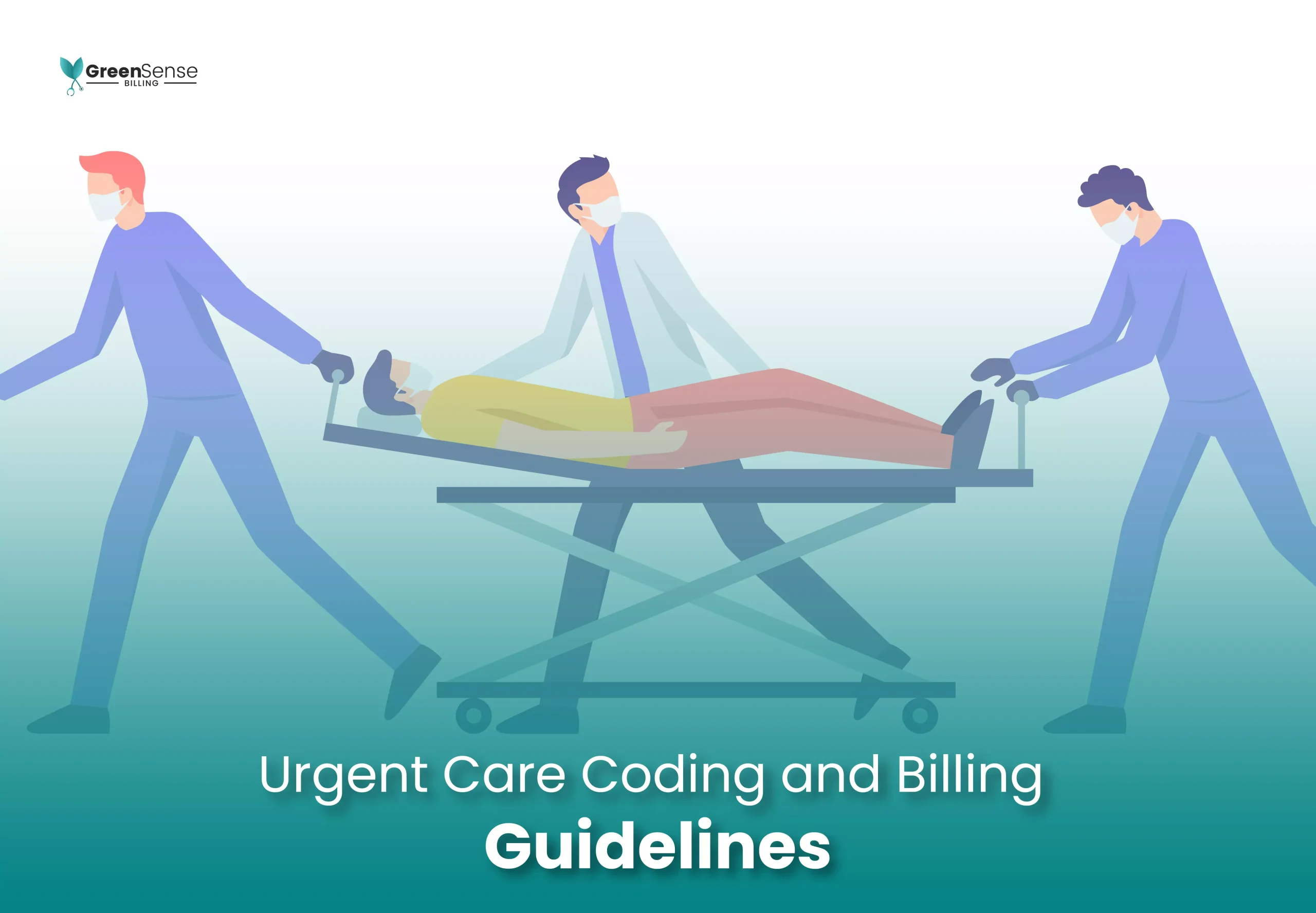
Billing and Coding Guidelines for Urgent Care Practice
- Post author: Admin
- Post published: September 14, 2023
- Post category: Uncategorized
- Post comments: 0 Comments
Are you an urgent care provider in the United States looking to streamline your urgent care medical billing and coding practices? The world of healthcare reimbursement is complex, but mastering it is crucial for the financial health of your practice. In this comprehensive guide, we’ll address vital questions such as:
- What are the CPT codes for urgent care visits?
- How to ensure accuracy in urgent care billing and coding ?
- What are the essential urgent care coding and billing guidelines ?
By the end of this article, you’ll have a clear understanding of the complexities involved in urgent care billing and coding , enabling you to optimize your practice’s revenue cycle.
Understanding Urgent Care CPT Codes

To efficiently bill for urgent care services, you need to be familiar with the Current Procedural Terminology (CPT) codes specifically designed for this setting. CPT codes for urgent care visits fall into the Evaluation and Management (E/M) category, with the most common codes being 99201-99215.
These codes cover a range of services, from simple problem-focused visits to comprehensive examinations. The choice of code depends on the complexity of the patient’s condition and the extent of the evaluation.
Selecting CPT Code Urgent Care Visit
Choosing the correct urgent care billing codes is crucial for urgent care bills .
Here’s a simplified breakdown:
99201-99205
These codes are for new patient visits, with 99201 being the simplest and 99205 the most complex.
99211-99215
These CPT codes are for established patient visits, with 99211 being the simplest and 99215 the most complex.
You have to consider the patient’s medical history, the level of physical examination, and the complexity of medical decision-making to determine the appropriate code. Documenting these aspects thoroughly is essential to ensure accurate urgent care billing .
Key Elements for Urgent Care Billing and Coding Documentation
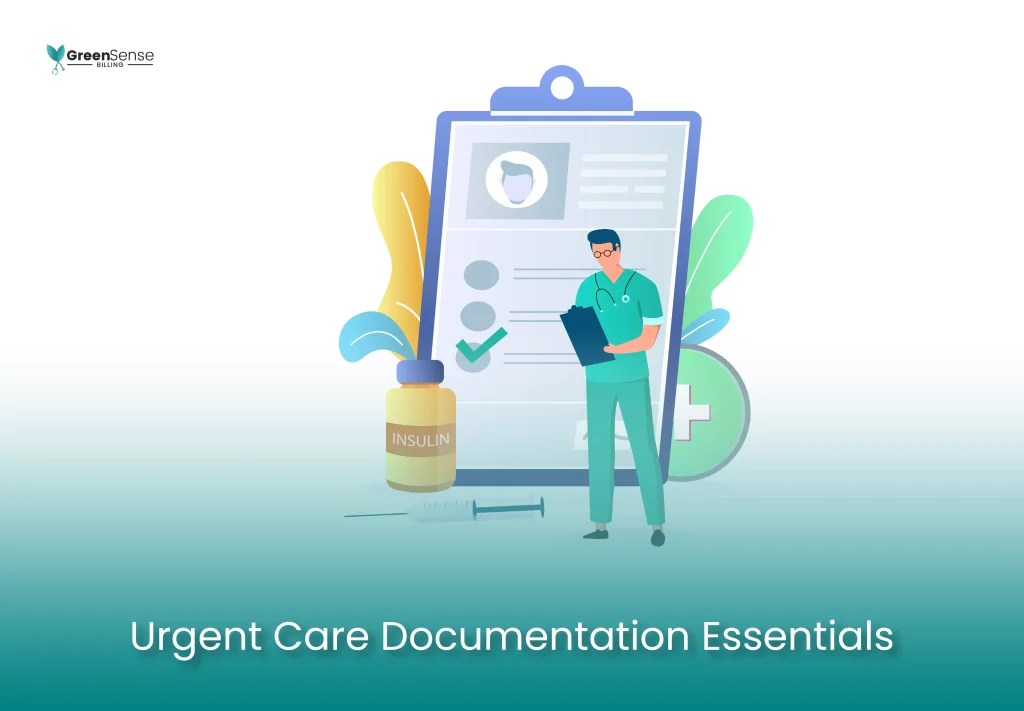
Accurate coding relies heavily on precise documentation. When documenting an urgent care visit, ensure you include the following key elements:
Chief Complaint
Clearly state the reason for the visit in the patient’s own words.
History of Present Illness
Provide a detailed description of the patient’s current symptoms, including their onset, duration, and any exacerbating or alleviating factors.
Review of Systems
Document the patient’s relevant symptoms or complaints in various body systems.
Physical Examination
Perform a thorough examination and document your findings, focusing on the affected area or system.
Medical Decision-Making
Explain the thought process behind your diagnosis, any tests ordered, and the treatment plan.
If time is a significant factor in the encounter, be sure to document the amount of time spent with the patient.
Urgent Care Billing Guidelines
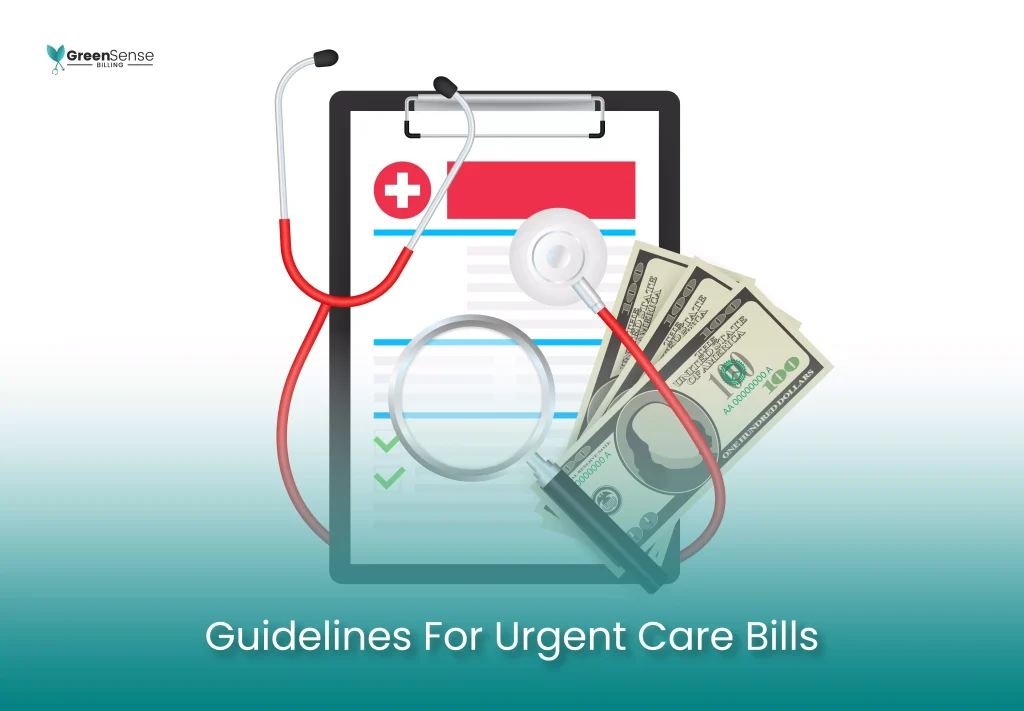
Billing for urgent care services involves more than just coding. You must also follow specific guidelines to ensure accurate reimbursement. Here are some essential billing guidelines for urgent care practices:
Verify Insurance
Check the patient’s insurance coverage and eligibility before the visit to avoid billing issues later.
Collect Copayments
Collect any required copayments or deductibles at the time of the visit.
Use Modifiers
When necessary, apply modifiers to the CPT codes to indicate special circumstances or procedures performed.
Submit Clean Claims
Ensure that claims are error-free and submitted promptly to avoid delays in reimbursement.
Stay Updated
Keep up with changes in billing regulations and coding updates to remain compliant.
Billing and Coding Software
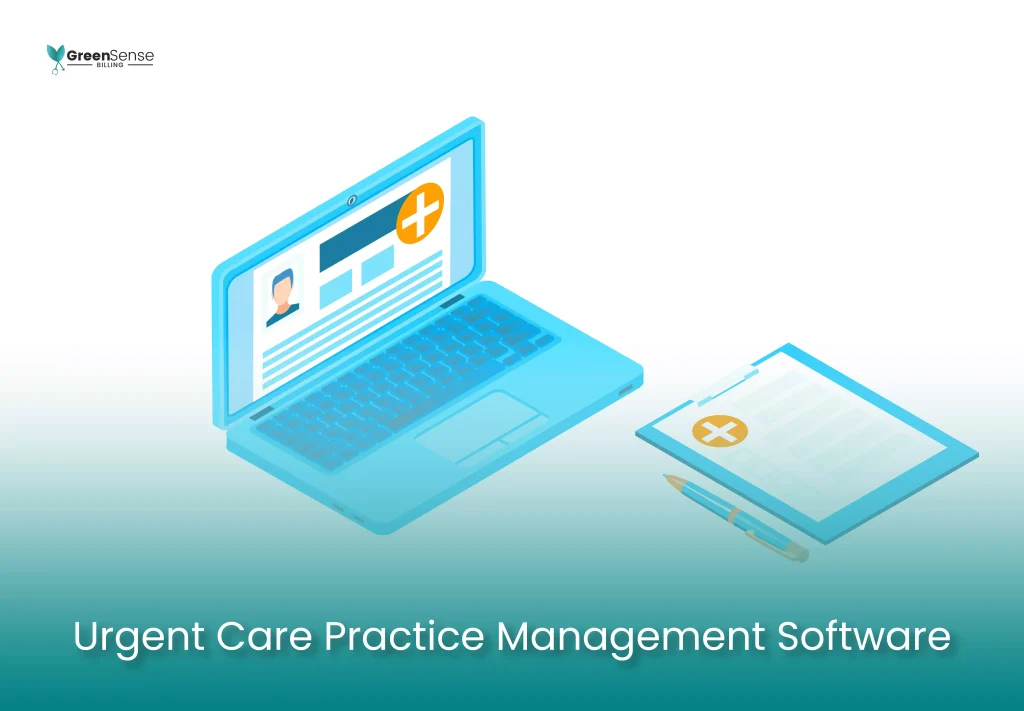
Using billing and coding software designed for urgent care practices will give you an edge. These tools can help streamline the medical billing and coding process, reduce errors, and improve billing accuracy. Many software solutions offer features like automatic code suggestions, claim tracking, and reporting, such as the one we offer at GreenSense Billing. These practice management software are no less than a life-saver for your urgent care practice.
The Role of Documentation in Audits
Proper documentation is your best defense in case of audits or billing disputes. It not only supports accurate coding but also demonstrates the medical necessity of the services provided.
Resources for Ongoing Learning
The field of healthcare billing and coding is dynamic, and it’s essential to stay informed. Take advantage of resources such as online courses, seminars, and professional organizations to keep your knowledge up-to-date.
Billing and coding for urgent care services require a solid understanding of CPT codes, accurate documentation, and adherence to urgent care billing guidelines. By following these guidelines, you can optimize your practice’s revenue cycle, reduce billing errors, and ensure proper reimbursement for the valuable care you provide to your patients.
As an urgent care provider, staying informed and continuously refining your urgent care billing and coding processes is essential to the financial success of your practice. By mastering these fundamentals, you’ll be better equipped to navigate the complexities of the healthcare reimbursement landscape in the United States.
Following are the common urgent care billing and coding questions we receive daily. Let’s see if they can help you out.
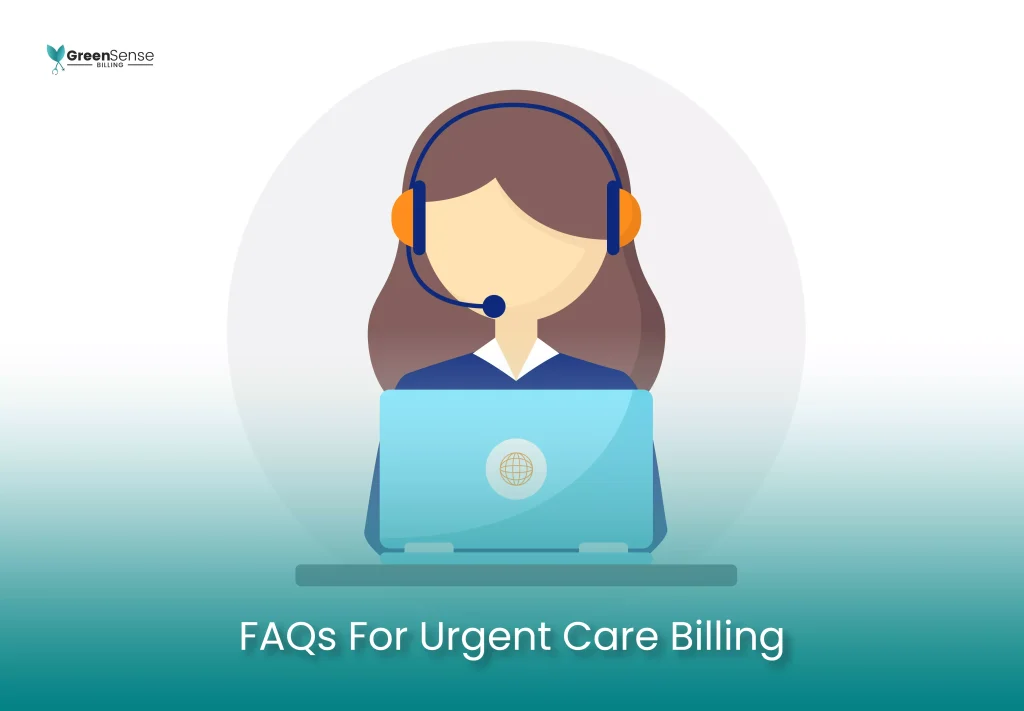
Common CPT codes for urgent care include 99201-99215. You have to select the appropriate code based on the complexity of the patient’s condition and evaluation.
2: How can I ensure accurate billing and coding for urgent care visits?
Accurate coding requires thorough documentation. Document the patient’s chief complaint, history, examination findings, medical decision-making, and any additional procedures performed.
3: What are modifiers in urgent care billing , and when should they be used?
Modifiers are two-digit codes added to CPT codes to provide additional information about a service. They should be used when needed to convey special circumstances or procedures performed during the visit.
4: How can I stay updated with changes in urgent care billing regulations?
To stay informed, subscribe to industry newsletters, join relevant professional organizations, and consider using billing and coding software like GreenSense Billing, which often incorporates updates and best practices.
5: What is the role of proper documentation in urgent care billing ?
Proper documentation is crucial for accurate billing. It supports correct coding and justifies the medical necessity of services during audits or disputes.
6: How can I handle insurance verification for urgent care patients?
Verify insurance coverage and eligibility before the patient’s visit to prevent billing complications and to ensure timely reimbursement.
7: What are some common errors to avoid in urgent care bills ?
Common errors include incorrect coding, failure to collect copayments, and submitting claims with missing or inaccurate patient information. You can reach out to our representatives at GreenSense Billing to learn more and reduce such errors.
8: Are there specific guidelines for billing procedures like sutures or X-rays in urgent care?
Yes, each procedure has its corresponding CPT code. Ensure that you use the appropriate code and document the procedure’s details to support billing.
9: How do I appeal denied claims in urgent care billing ?
If a claim is denied, review the denial reason, correct any errors, and resubmit the claim with additional documentation if necessary. GreenSense Billing can help you track and manage claim appeals.
10: Can outsourcing urgent care billing and coding streamline the process?
Yes, outsourcing to a reliable medical billing service can save time, reduce errors, and improve revenue collection, allowing you to focus on patient care while maximizing your collections.

You Might Also Like

7 Easy Ways Physicians Can Reduce Burnout
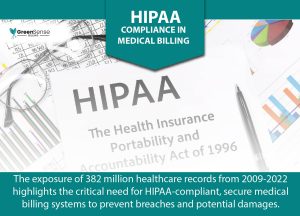
How to Ensure HIPAA Compliance in Medical Billing

Latest CPT Coding Changes & Updates in 2021
Leave a reply cancel reply.
Save my name, email, and website in this browser for the next time I comment.
Privacy Overview
Scalable Solutions Whether You Operate A Small Practice or a Large Provider Health System Learn More >

Urgent Care Billing: A Comprehensive Guide & Reasons to Outsource
Your urgent care practice is thriving – you have decent patient volume, you have positive reviews online, and you hire providers dedicated to providing evidence-based, compassionate care – but your profit margins are still not what you expected. If your revenue leaves something to be desired, your billing processes could be the issue. Learn the basics of urgent care billing and how you can boost your practice revenue with just a few tweaks.
Get A Free RCM Audit of Your Urgent Care Centers!
How Does the Urgent Care Billing Process Work?
As the gap between the primary care provider and the emergency room, urgent care clinics play a vital role in our healthcare system. That’s probably why they’re increasing in popularity and are expected to be worth $26 billion by 2023 . To command your fair share of the market, you have to understand the basics of billing and how you can optimize your workflows for maximum returns.
Urgent Care Billing Starts at the Front Desk
Urgent Care billing is a cycle – and that cycle begins at the front door. By making good financial policies that begin at check-in, you can increase your revenues and spend less money on costly collection processes .
Urgent care clinics generally do not have a pre-registration process, due to the walk-in nature of appointments. However, the receptionist or front desk person must take basic information for billing purposes when a patient initiates an appointment.
Essential information includes:
- Basic demographic information such as name, address, birth date, and the reason for the visit.
- Name of insurance company, primary care provider, and policy number.
Ideally, information during the registration process will facilitate the creation of an electronic health record (EHR) . Providers and support staff will work collaboratively within the EHR to make patient notes, record health history, treatment recommendations, and more. An up-to-date patient record with thorough notes makes the billing process much more streamlined. If a patient is a repeat visitor, it is important to make note of any patient demographic or insurance information at every visit.
Confirm Financial Responsibility
An urgent care clinic does not always have the time to call insurance companies to obtain pre-authorization for services. Patients should be familiar with their plan information and know what kinds of costs they can expect to incur from a walk-in facility. To avoid potential billing issues , it is important for each patient to sign an affidavit of financial responsibility prior to receiving medical services.
Post-Visit Follow Up
As a patient receives services from a physician or other provider, they should record all procedures and relevant information in the EHR. This helps create an accurate bill to facilitate in the creation of the claim and the collection of the patient balance.
Transmitting the Claim
The final part of the billing process, after each medical procedure has been properly coded and checked for regulatory compliance , is to send it out to the payer. The bill that the insurance company receives includes essential information about the diagnosis, procedures, and associated charges. An accurate bill helps ensure a streamlined reimbursement process, which helps ensure that you, as the healthcare provider, get reimbursed in a timely fashion.
Most healthcare practices submit their claims electronically, as this is the most accurate and expedient way to get reimbursed. Generally, medical software aids in the recording of patient information and the creation of claims for reimbursement.
Urgent Care Billing and Medicare
In general, urgent cares can bill more for their services using S codes, recognizing that after hours treatment costs more. CMS, however, may be less likely to pay for urgent care services, and errors in billing can only delay the process of reimbursement. Medicare uses a special facility code for urgent care centers (POS-20), but it still processes claims as if it were a primary care office (i.e., using codes POS-10 or POS-11). Medicare will reimburse urgent care for services rendered, but it’s important to note that it may not reimburse facilities for the naturally higher costs of providing walk-in care. As such, health care providers who wish to increase practice revenue should maximize the amount of patients who are privately insured.
The Cost of Urgent Care Billing
You have two main options when it comes to handling your urgent care billing: hiring in-house coders and billers or outsourcing the process to a professional. Both will require software licenses and other expenses. While some like having full control over the billing process, having in-house billers and coders tends to be more costly. You will have to pay salary and benefits to in-house employees, and an absence or unexpected employment termination can seriously affect your process.
Why Outsource Your Billing?
Appropriate, cost-efficient processes play a vital role in your practice revenue cycle. Outsourcing can help boost revenue and optimize resources:
- An outsourced billing company can help you with year-round billing needs, without having to account for unexpected employee downtime. This also allows your staff more time to engage in more patient care activities.
- Billing agencies are generally better at collecting delinquencies compared to in-house staff.
- Save money on hardware and software costs in your office.
- Convenience is one of the main reasons that urgent cares choose to outsource. A billing provider handles all the data entries, fixes rejected claims, and sends invoices to the patient. Data transfer is seamless with the help of an EHR interoperability system.
- Allow your staff to focus on patient-care activities, including delivering compassionate, evidence-based care that gets more patients in through your doors.
- Outsourcing will reduce the risk of billing and coding errors, which serves two purposes: first, it makes for a more streamlined billing process and more collections. Second, it helps ensure that your practice remains in compliance with regulatory agencies, like the Office of the Inspector General and the Centers for Medicare and Medicaid Services (CMS). The costs of noncompliance, even if accidental, can have an effect on your revenue cycle management .
Urgent Care Billing Guidelines
Urgent care providers evaluate and treat many of the same conditions as a primary care office. As such, the billing process is very similar. However, there are certain urgent care-specific codes – beginning with an “S” – that differ from primary care codes.
S Codes are Healthcare Common Procedure Coding System (HCPCS) codes that were originally designated by BCBS, but now many other payors accept them. They are only used by urgent cares, and some payors require them to reimburse facilities for services rendered.
Urgent cares have two main options when coding and billing for services rendered:
S9088 or “services provided in an urgent care center (list in addition to code for service)” allows for urgent cares to bill for the evaluation and treatment of medical conditions, while recognizing that services in an urgent care carry an inherently higher price tag. The S9088 code does not stand alone; it must be billed with an appropriate evaluation and management (E/M) code. The S9088 code allows urgent cares to receive reimbursement for at least a portion of the increased cost of providing immediate care.
S9083 – allows urgent care to charge a global fee for service, regardless of what treatment the patient receives. In some cases, a managed care organization (MCO) will require a facility to bill under code S9083. In fact, MCOs in some states – such as Florida and Arizona – require that urgent cares bill all services under S9083.
In general, it’s best to avoid the S9083 code if it’s possible.
The reason is simple: based on a global fee-for-service scale, your urgent care will be reimbursed the same amount for packing a nosebleed as it would managing a heart attack.
These two codes account for virtually all urgent care visits, (S9083 by itself, and S9088 with appropriate add-on CPT E/M codes). There are a couple of other S codes that may be appropriate for urgent care practices, but virtually all encounters can fall under these two categories, with the exception of Medicare. Medicare codes are separate, and the rate of reimbursement depends on geographic location and established medical necessity, among other factors.
Before a bill can go to a patient or payer, it must satisfy certain regulatory requirements, including compliance with HIPAA and the Office of the Inspector General. A biller must also ensure that each charge is, in fact, billable, according to the payer’s rules. Denied claims can be time-consuming, waste resources and manpower, and further complicate the billing process.
Coding Guidelines for Urgent Care Billing
Once a patient encounter is complete, a coder typically translates all the diagnoses and procedures into medical code sets universally used by the medical industry (i.e., ICD 10, CPT). ICD-10 codes provide a diagnosis, while current procedural terminology (CPT) codes designate any procedures that a provider used in the process of delivering care. CPT codes are used in conjunction with an ICD (diagnosis) code for the purposes of creating patient bills. CPT codes come in one of three categories:
- Category 1 CPT codes are the most popular, and they encompass the evaluation and management of disease, surgery, radiology, pathology and laboratory testing , medicine, and anesthesiology.
- Category 2 codes are supplemental, quality assurance codes that are optional and not a replacement for Category 1 codes.
- Category 3 codes are for emerging procedures and technology that may not be approved by the FDA.
Generally speaking, an urgent care would only have occasion to bill Category 1 CPT codes.
The Most Common CPT Codes in Urgent Cares
The majority of CPT codes used in urgent cares are E/M codes. In an urgent care setting, some of the most common CPT codes include:
99214, according to the AMA, is for an “office or other outpatient visit for the evaluation and management of an established patient, which requires at least two of these three key components: a detailed history, a detailed examination and medical decision making of moderate complexity.”
99213 is for an existing patient that requires treatment, but does not have the same level of complexity as 99214. It is one of the most commonly billed codes, because it is easier to fulfill the criteria for reimbursement. However, it does not typically reimburse as much as a 99214.
99204 is one of the most commonly used codes in an urgent care setting for new patients. It requires fulfillment of three key criteria: a comprehensive history, comprehensive exam, and medical decision-making of moderate complexity. It has a relatively high rate of reimbursement at a comparable low risk of noncompliance.
According to CPT assistant, which provides industry-recognized guidance to billers and coders, most urgent care CPT codes fall under 99202- 99205 and 99211-99215. Remember, since urgent cares serve as the gap between a primary care office and an emergency room, you cannot bill with ER-designated CPT codes, as this could serve as a compliance risk.
Urgent Care billing is complicated but tends to follow similar procedures as a primary care office. You must follow coding and billing guidelines to remain compliant with regulatory requirements. Hiccups in the billing process can upset your revenue cycle management and affect your practices bottom line. Outsourcing is an effective measure for streamlining billing, eliminating redundancies, and improving your collections while allowing your employees to focus on patient-centered care.
Need Help Billing For Your Urgent Care Centers?
Talk to a Med USA Urgent Care RCM Expert Today!
More Related Articles
Discovering the source behind the ubiquitous filler text. In seeing a sample of lorem ipsum, his interest was piqued by consectetur

Best Practices for Ensuring Compliance in Healthcare Billing

A Practice Roadmap for Orthopaedic Revenue Cycle Management

The Role of Healthcare Analytics and Business Intelligence in Practice Success
Marissa Redington is a director of revenue cycle management at Med USA. She has spent 9 of her 15 years in medical billing at Med USA, working her way from a billing specialist to a revenue cycle manager and director. Marisa is energized by the constant change in healthcare payment regulations and enjoys applying her expertise help clients find creative solutions to their challenges.
- CureCloudMD
- Starting at as low as 2.95%
- [email protected]
- +1 205 947 3264

- medical-billing
Urgent Care Coding Guide for Healthcare Professionals
A detailed overview of urgent care coding.
Urgent Care services are legitimate medical services required for an illness or injury that would not result in further death or impairment if treated immediately but needs professional attention. It can potentially develop a threat if treatment is delayed for more than 24 hours. A wide range of diseases require urgent care, but a few are as follows.
- Nausea
- Conjunctivitis (Pink eye)
- Infection of the ears
Urgent Care centers are rapidly expanding as the healthcare industry evolves. Their ability to provide swift, low-cost and adequate medical care influences their prominence. At the same time, Urgent care billing and coding are more complex than other medical billing and coding scenarios due to unpredictability in patient flow and the fast-paced environment.
Urgent Care Billing and Coding Concerns
Urgent care centers face numerous billing and coding challenges:
Coding: The coding guidelines for urgent care are nearly identical to those for primary care. Providers must appoint the appropriate code for the medical service delivered while also adhering to insurance company rules.
Time limitations: Providers in urgent care do not have time to wait for insurance preauthorization and verification before offering services.
Medicare limitations: Although Medicare covers 80% of urgent care costs, this coverage is lower than that of private health insurance in terms of urgent care reimbursement.
Coding Guidelines for Urgent Care Billing
A physician in urgent care is required to know coding guidelines. A physician needs to code an encounter accurately and efficiently so that patients can receive appropriate service reimbursement. The CPT manual is a set of codes used by physicians and other healthcare providers to report procedures and services they provide. The codes are arranged by specialty, diagnosis, body system, or procedure type.
After completing a patient encounter, a coder usually translates all diagnoses and processes into medical code sets that are universally used in the healthcare industry (i.e., ICD 10, CPT). ICD-10 codes provide a diagnosis, whereas CPT codes appoint any procedures a provider uses while providing care. CPT codes are combined with ICD (diagnosis) codes to generate patient bills. CPT codes are classified into three categories:
Category 1 codes are the most popular, which cover disease evaluation and management, surgery, radiology, pathology and lab testing, medicine, and anesthesiology.
Category 2 codes are additional quality assurance codes that do not replace Category 1 codes.
Category 3 codes are for new procedures and technologies that the FDA still needs to approve.
Basic Codes
The billing processes for Urgent Care and Primary Care are nearly identical because the problems treated by both are identical. However, a few medical codes are unique to Urgent Care Billing . These codes begin with the letter “S.” Urgent Care billing uses codes that start with an “S.”
Two primary code groups pertain to all Urgent Care services apart from Medicare.
S9083: This code allows Urgent Care to charge a single service fee regardless of the patient’s treatment plan. In some cases, a managed care organization (MCO) may require a hospital to bill using the S9083 Urgent care billing code. Several MCOs in states such as Florida and Arizona need urgent care to bill all services under S9083.
S9088 is also known as services provided in an urgent Care center (list in addition to code for service). It allows urgent care centers to bill for medical diagnosis and treatment while admitting that services provided in an Urgent Care facility are inherently more cost prohibitive. The S9088 code must be used with the appropriate evaluation and management (E/M) code. The Urgent care billing code S9088 allows centers to be reimbursed for some of the elevated costs associated with providing urgent care.
The Most Common CPT Codes for Urgent Care
E/M codes account for the majority of CPT codes in Urgent Care centers. These codes can be used to bill patients and insurance companies for services rendered. Various types of doctors who provide urgent care also use these codes. According to CPT assistant, which offers billers and coders industry-recognized guidelines, most urgent care medical billing CPT codes fall between 99202-99205 and 99211-99215. It is important to remember that billing with ER-designated CPT codes is not permitted because urgent cares bridge the gap between a primary care office and an emergency department, posing a compliance risk. The following are some of the most commonly used CPT codes in an urgent care setting:
CPT Code 99202: This code is used for New Patient Office or Outpatient Services with a time duration of 15 – 29 minutes. An office or other outpatient visit for evaluating and managing a new patient includes the following three key components: a comprehensive problem-focused history, a comprehensive problem-focused investigation, and streamlined medical decision-making.
CPT Code 99203: This code is used for a new patient office visit or other outpatient services for 30-44 minutes. An office or further outpatient visit for evaluating and managing a new patient includes the following three key components: a detailed history, a detailed examination, and low-complexity medical decision-making.
CPT Code 99204: It is one of the most commonly used codes in an Urgent Care setting for new patients with a time duration of 45-59 minutes. It necessitates three critical criteria: a thorough history, a thorough review, and moderately complex medical decision-making. It has a relatively high reimbursement rate with a low risk of noncompliance.
CPT Code 99205: This code is for New Patient Office or Other Outpatient Services with a time duration of 60 – 74 minutes. Office or another outpatient visit for the evaluation and management of a new patient requires three key components: a thorough history, a comprehensive investigation, and high-complexity medical decision-making.
CPT Code 99212 : This code is for established patient office visit office with a time duration of 10-19 minutes or another outpatient visit for the evaluation and management of a pre-existing patient that necessitates a medically appropriate history and examination as straightforward medical decision-making.
CPT Code 99213: This code is for an existing patient with a duration of 20-29 minutes which requires care but is less complicated than code 99214. It is one of the most commonly used codes because it makes meeting reimbursement requirements easier. Moreover, it frequently reimburses less than 99214.
CPT Code 99214: According to the American Medical Association, diagnosis code 99214 is for “office or other outpatient visits for the assessment and management of an established patient with the time duration 30-39 minutes, requiring at least two of these three key elements: a detailed history, a detailed examination, and medical decision-making of moderate complexity.
CPT Code 99215: This code is used for patient Office or Other Outpatient Services, lasting 40 – 54 minutes. An office or other outpatient visit for evaluating and managing an established patient includes at least two of the following three key components: a thorough history, a detailed examination, and high-complexity medical decision-making.
ICD-10 Coding For Urgent Care Billing
The International Classification of Diseases (ICD-10) is a system of organized disease codes which provides a standardized way to classify all diseases, injuries, and other health problems. The ICD-10 coding system allows us to code everything from standard to uncommon conditions because every condition has a unique code. If you have an urgent care visit and your doctor uses the ICD-10 coding system to bill your insurance company, they’ll be able to make sure that you’re correctly reimbursed for all of your treatment.
Urgent care is an excellent option if you have an urgent medical need and don’t have time to wait for your regular doctor’s appointment. However, if you’re hoping to get reimbursed by your insurance company, you’ll need to ensure that your urgent care visit is coded correctly. ICD-10 codes are used in the billing of urgent care visits. If you don’t have a valid ICD-10 code, it will be hard for your insurance company to pay for the services rendered at your urgent care clinic. Most urgent care centers use the ICD-10 codes to bill hospital services. This way, the centers can get paid for their treatments promptly.
Conclusion
Although urgent care and primary care have many coding standards in common, it is the coder’s responsibility to select the urgent care billing codes that are most relevant for a given medical treatment while also ensuring that the codes comply with regulatory requirements. Before filing a claim, urgent care bills must also follow specific insurance company regulations. If this requirement is not met, urgent care claims will most likely be rejected.
Leave A Comment Cancel reply
Your email address will not be published. Required fields are marked *
Save my name, email, and website in this browser for the next time I comment.
Recent Posts
- Maximizing Your Practice’s Revenue: Top 5 Tips for Improving your Laboratory Billing Services
- Practical Guideline To Laboratory Billing Services 2023
- Top 5 Reasons To Outsource Laboratory Billing Services & Benefits It Offers?
- Get Your Finances In Order With Professional Urology Billing Services in 2023
- How Does Gastroenterology Billing Work? Get The Best Medical Billing Services
Recent Comments

Home · Blog · The Challenges of Medical Coding Services and Reimbursement for Urgent Care
Unity Communications
- June 2, 2022
The Challenges of Medical Coding Services and Reimbursement for Urgent Care

Get our weekly newsletter
How-to guides, tips and actionable advice on how to manage your BPO team like a pro.
Written by Marielle Gonzales
Urgent care clinics continue to develop at a breakneck pace as the healthcare environment evolves. Their appeal stems from their capacity to provide healthcare swiftly, inexpensively, and efficiently.
Between 2007 and 2016, the urgent care industry had a 1,725 percent rise in private insurance claim lines for urgent care services. Experts predict that the market will continue to grow, reaching $26 billion in 2023.
This blog post will cover all you need to know about the challenges associated with medical coding services and how urgent care is reimbursed.
How Is Urgent Care Reimbursed?

Healthcare reimbursement is the payments received by a hospital, healthcare provider, diagnostic facility, or other healthcare providers for providing patients with a medical service. A patient’s health insurance or a government payer covers all or a portion of the cost of treatment.
Depending on health plans, consumers may be liable for a portion of the cost. If a patient does not have health insurance, they will be responsible for the total cost of the medical bill.
Payment is made after a patient receives medical treatment, so the term “reimbursement” is used. When picking health insurance coverage and tending to healthcare, there are various things you should understand regarding healthcare reimbursement.
By establishing sound financial practices that begin at check-ins, you can increase your income while spending less on expensive collection methods.
Due to the walk-in nature of urgent care visits, most urgent care facilities do not need pre-registration. However, when a patient initiates an appointment, the receptionist or front-desk employee must collect basic billing information.
The following information is critical:
- Demographic data such as the visitor’s name, residence, birth date, and purpose for the visit
- The insurance company’s name, the primary care provider’s name, and the policy number
Ideally, registration data will contribute to creating an electronic health record (EHR). Providers and support personnel will collaborate on patient notes, health history, and treatment recommendations inside the EHR.
Learn more: Ask these 5 questions before outsourcing medical billing and coding .
What Is the CPT Code for an Urgent Care Visit?

Urgent care services are categorized similarly to physician office visits (CPT Codes 99201 to 99215). Most insurance companies will pay a flat-fee basis for treatments and other procedures done on the same day. Few carriers deliver urgent care facilities on a per-service basis, which is classified into three tiers.
Florida’s Blue Cross and Blue Shield (BCBS) is an ideal example of such reimbursements.
Current Procedural Terminology (CPT) Codes 99201 to 99202 and 99211 to 99212 are classified as Level I services. At the same time, CPT Codes 99203 and 99213 have a higher reimbursement rate than Level I and are classified as Level II services. CPT Codes 99204 to 99205 and 99214 to 99215 have a higher reimbursement rate than Level I and are classified as Level III services.
Just a few more details for coders about these three service levels:
- Level I / Triage Care (Minor Problems): When patients simply get evaluation and management services without diagnostic testing
- Level II / Intermediate Care (Moderate Problems): If injections and vaccines are delivered and E&M services.
- Level III / Complex Care (Severe Problems): IF IV infusion, sutures, and E&M therapies are administered.
See more information about: A Quick Guide to Medical Billing and Medical Coding Services
Urgent Care Coding and Billing Guidelines: Is It Cheaper to Go to the Doctor or Urgent Care?

If a person cannot contact their physician or needs treatment outside of regular business hours, they can go to an urgent care facility or a retail health clinic. They can find these walk-in clinics in pharmacies and retail stores.
A nurse practitioner or a physician assistant can attend to a patient with a mild illness and injury such as the common cold, the flu, or ear infections. Urgent care facilities employ doctors and can treat additional diseases.
Visiting a retail health clinic or an urgent care center is less expensive than going to the emergency room. But a patient must be prudent in choosing a facility covered by their insurance plan.
Without insurance, urgent care costs between $80 and $280 for a routine visit and between $140 and $440 for a more complex appointment. Without insurance, the typical cost of a doctor’s visit is between $300 and $600. However, this is not to say that urgent care is always the less expensive alternative for getting treatment.
Urgent Care Coding and Billing Guidelines: How Does Medical Coding Relate to Reimbursement?
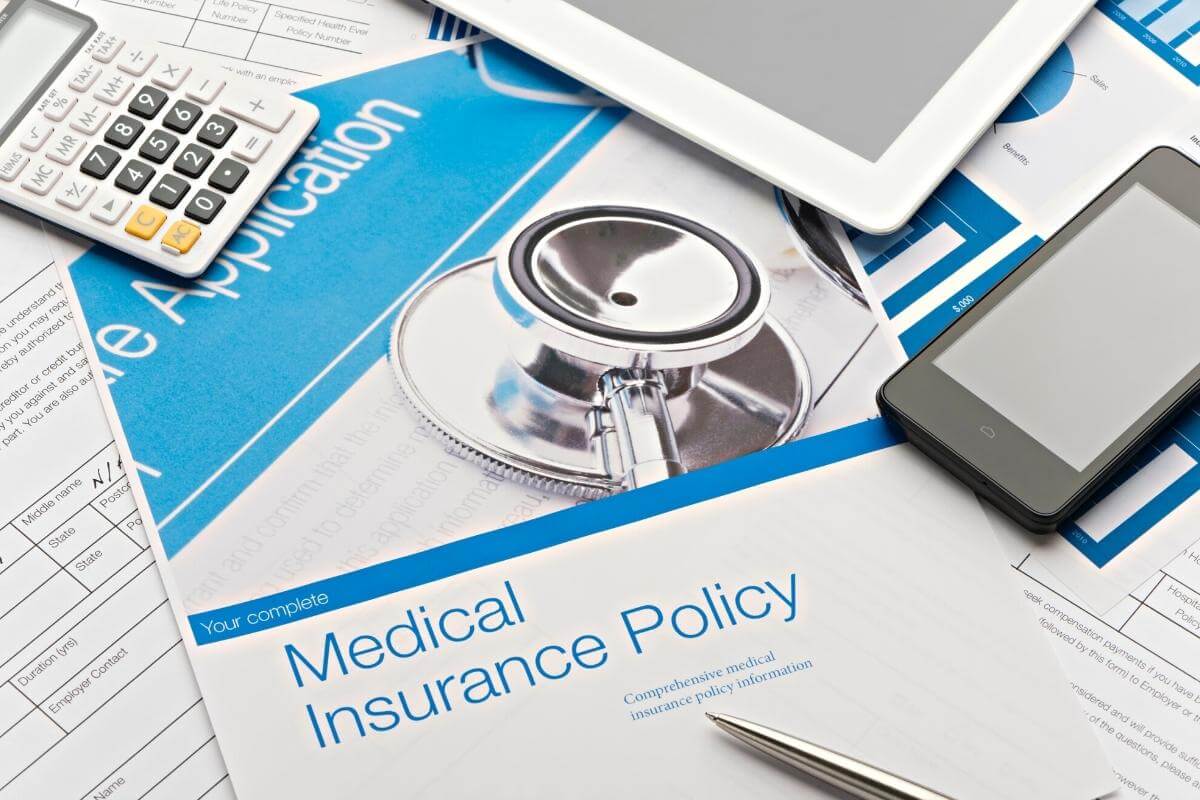
Medical reimbursement and coding are critical components of the healthcare billing cycle.
Medical coding converts a patient’s billable medical services into medical reimbursement codes that insurance companies use to pay each claim accordingly. Specialists in reimbursement and coding study the ins and outs of biology, physiology, anatomy, and medical language.
They must grasp how the body functions and which diagnoses are associated with each bodily component. And they learn to classify those diagnoses using the correct medical reimbursement codes so that insurance companies pay claims accurately.
People interested in medical billing and coding ask if the tasks are difficult to learn. Students enrolled in medical reimbursement, and coding courses can quickly grasp the fundamental ideas if they put in the work.
Urgent Care Coding and Billing Guidelines: How Are Doctors Reimbursed?
Insurance companies and government payers pay healthcare professionals through a payment system. After a patient receives medical care, their provider will submit a bill to whoever is responsible for paying for their medical expenses.
The price invoiced is determined by the nature of the treatment and the amount agreed upon by Medicare or the health insurance to pay for that service. You can search out the cost of an operation using CPT. Private insurance firms directly contract with providers and hospitals to determine payment rates.
Certain hospitals and providers refuse to take patients whose insurance does not cover them adequately—unless the situation is an emergency.
Urgent Care Coding and Billing Guidelines: What Are the Hardest Billing Challenges Urgent Care Providers Face?

The urgent care business in the United States has encountered several new financial difficulties due to the COVID-19 epidemic. To successfully traverse new and uncharted ground, urgent care clinics, like most businesses, have had to pivot and adjust their business processes and workflows. This is particularly true in the area of COVID-19 invoicing and payment.
Three of the Most Serious Billing Issues Facing Urgent Care Providers
1. reimbursement for uninsured and undocumented patients’ testing and treatment.
As a result of the pandemic’s economic consequences, the United States’ unemployment rate increased to levels comparable to the 1930s. In April 2020, the unemployment rate was almost 15% .
Many people and their families were uninsured due to the employment-based nature of their healthcare coverage. However, unemployed people have bounced back ever since, as the rate has considerably gone down at 4%.
In April, the Health Resources and Services Administration (HRSA) introduced the COVID-19 Uninsured Patient Portal to compensate clinicians for treating and vaccinating uninsured COVID-19 patients at Medicare rates. The initiative was critical during the first year of the pandemic since it ensured that more people could get necessary treatment despite their lack of insurance.
2. Continual Revisions to Healthcare Rules and Codes
Throughout the pandemic, healthcare policy and coding standards were constantly changing. As part of these ongoing developments, new CPT codes for recording and invoicing pandemic-related visits were introduced. Healthcare providers had to implement telehealth practices to limit risk via remote patient testing management.
Retraining and modifying current systems to include new codes needed time that urgent care clinics could not afford as visit volume grew. Additionally, criteria differed throughout the continuum. Different payers have varying telemedicine policies, resulting in contested claims across the sector and increased workload for provider offices.
3. Patient Confusion over COVID-19 Care Coverage
Throughout the pandemic, urgent care clinics faced the impact of patient confusion. Patients were fearful and apprehensive of so many things—virus exposure, telehealth alternatives, testing sites, test eligibility, and COVID-19 coverage.
Along with addressing the increasing demand for testing, clinic personnel was confronted with more inquiries than ever before as patients sought clarification and reassurance from their local clinicians.
While the government verified that COVID-19 testing would be free for everyone, some restrictions were not clearly explained to consumers, including changes in standards for routine screenings versus testing people who have been exposed to the virus.
As a result, patients expected free COVID-19 testing and treatment, so they went to urgent care clinics. But some were still billed according to their insurance coverage, resulting in billing problems.
Discover: How to choose the right BPO Company
The Bottom Line
As the urgent care market changes in response to the COVID-19 pandemic, urgent care providers must double down on their efforts to ensure healthy and sustainable revenue cycles despite the shifting environment.
Urgent care clinics have become a popular and necessary addition to the American healthcare system. The industry is growing rapidly, and medical coding services are becoming increasingly important.
However, urgent care clinics still have to face many challenges when it comes to reimbursement. We hope this blog post has helped you understand the complex world of medical coding and reimbursement in the urgent care industry.
We Build Your Next-Gen Team for a Fraction of the Cost. Get in Touch to Learn How.
You may also like.

Why Mexico Is the Perfect Nearshore Business Process Outsourcing Destination: A Guide
Mexican virtual assistants (VAs) are in high demand by U.S. businesses for their bilingual fluency, efficiency, and affordability. Mexico’s proximity to the U.S. and competitive rates make it an ideal BPO destination. Read on to understand why Mexico excels in outsourcing.

Expertise Access for Phoenix-based Companies: Leveraging Specialized Resources Through Outsourcing
A Phoenix BPO company offers international expertise, providing tailored teams amid Arizona’s competitive labor market. Services include accounting, customer support, digital marketing, HR, and healthcare. Access diverse specialized resources for your Phoenix business.

Exploring the Advantages and Disadvantages of Nearshore Outsourcing in Mexico
Outsourcing offers cost savings but entails challenges like time zone differences and cultural barriers. Nearshore outsourcing, such as partnering with Mexico teams, minimizes these issues. This article explores the benefits and drawbacks of this strategy, particularly in Mexico.
Meet With Our Experts Today!
Other Pages
© 2024 Unity Communications. All Rights Reserved.
- Find a Doctor
Coding and Billing Guidelines for Urgent Care
- Provider Service: 800-368-2312
- For Medicaid Expansion: 833-777-5779
- Caring Foundation
- Privacy & Legal
- Our Partners in Health:
Fargo (Headquarters) 4510 13th Ave. S. Fargo, N.D., 58121
Blue Cross Blue Shield of North Dakota is an independent licensee of the Blue Cross Blue Shield Association, serving residents and businesses in North Dakota. All rights reserved.
© 2024 Blue Cross Blue Shield of North Dakota
- Non-Discrimination Notice
- العَرَبِيَّة
- Diné Bizaad
Processing...
Please wait while your form is being submitted
- Premier Medical Billing & Coding Services
- (516) 665-1869
- Get Started

New Patient Visit CPT Codes in Urgent Care Billing
Handling the complexities of urgent care, such as managing new patient office visits, has become increasingly challenging for urgent care facilities. Differentiating them from the rest of the patients is a tedious task that is further complicated by filtering out the Medicare urgent care CPT codes list using appropriate codes to generate a claim for new patient visits. A slight error in any of the issues can lead to a claim denial, which can cause delayed or no reimbursement. So, as an urgent care provider, you need to pay attention to this issue and make necessary amendments to avoid lost revenue. In this article, we will discuss who new patients are, how they are different from established patients, and how to apply CPT codes for new patient visits in urgent care billing.
Who is a New Patient?
Drawing a line between new and established patients is essential to ensure accurate billing in urgent care. A new patient in urgent care is a person who has not been rendered any professional services from the urgent care provider or another provider in the same specialty and group practice within the last three years. On the contrary, the established patient has received professional services in the previous three years. However, to accurately distinguish between both, you must first understand the terms 'professional services' and 'group practice. Incorporating your learnings into coding for urgent care services will increase chances for a swift reimbursement.
Professional Services in Urgent Care
Professional services in urgent care are the services provided in a face-to-face encounter by a physician or qualified healthcare provider and documented using appropriate CPT codes. This definition is crucial in distinguishing between new and established patients. In urgent care facilities, a patient will be deemed new if they have not been involved in any face-to-face encounter with the provider. The patient will thus be billed using CPT codes specific to new patients' office visits. This distinction is vital in urgent care settings, where patients seek immediate attention for acute medical issues.
Group Practice in Urgent Care
Group Practice is a term used for healthcare organizations where multiple healthcare providers work together. Basically it is a kind of medical group or clinic. In such practices, distinguishing between new and established patients is much more complicated. This is because the patient visiting a provider for the first time may have visited another provider within the same facility. For instance, an athlete who is injured visits a physiotherapist in an urgent care facility for pain relief. If the same athlete, after some time, visits the facility to receive care from an orthopedic specialist within the same facility, they would be considered a new patient. The critical element in this scenario is the specialty designation of the healthcare provider.
New vs Established Patient in Urgent Care
As already stated, the established patient is someone who has been provided services in the last three years; there is one other difference. To apply new patient visit CPT codes, you need to fulfill all three key components- history, examination, and medical decision-making. In contrast, established patient visits (coded from 99211-99215) necessitate only two of these components. In the urgent care context, where patients often seek prompt attention for acute issues, accurately coding encounters ensures fair reimbursement and reflects the services' complexity. Despite this, there may be scenarios where the same service components result in a higher relative value unit (RVU) for an established patient code than the appropriate new one. This can occur due to the differing coding requirements and the nature of urgent care visits, where established patients may present with more complex conditions or require more extensive management despite failing to meet the stringent criteria for new patient coding. Therefore, for urgent care facilities, understanding and appropriately applying new and established patient coding guidelines are essential for financial reasons and maintaining quality care standards.
Consultations vs. new patient visits
Sometimes a patient is only referred to a physician for consultation. Such an encounter may not be charged using new patient cpt codes, rather it will be deemed merely as consultation service. According to CPT a consultation is “a type of service provided by a physician whose opinion or advice regarding evaluation and/or management of a specific problem is requested by another physician or other appropriate source.” For example, a patient who has suffered an accident fracturing their leg without any visible damage to the head portion visits an urgent care facility. Such a person might be sent to a concussion specialist to completely rule out any head damage. Such a service will be considered consultation as the providers will only ask questions. It is to be noted that consultation codes are uniformly applied to both new and established patients.
New Patient CPT Code Range 99202 – 99205
New patient CPT code range describes the initial visit with a healthcare provider. These codes were last revised in the year 2021 by the AMA to better reflect the level of complexity and time required for a visit. The new patient CPT code range is as follows:
- CPT Code 99202 (H3) This code is used for a new patient visit that requires a low level of medical decision-making. A comprehensive problem-focused history, examination, and simple medical decision-making are all part of this 15–29-minute appointment for a new patient.
- CPT Code 99203 CPT Code 99203 describes a New patient office or other outpatient visits that requires a comparatively high level of medical expertise. The typical time for this visit is a 30 to 44-minute appointment. A thorough history, physical examination, and simple medical decision-making are all part of it.
- CPT Code 99204 This code is used for a new patient visit that requires a high level of medical decision-making. The typical time for this visit is 45–59-minutes. Documentation requirements for new patient CPT code 99204 includes a thorough examination and history and difficult medical decision-making.
- CPT Code 99205 This code describes a level 5 new patient visit that requires a comprehensive level of medical decision-making. The typical time for this visit is 60–74-minutes . Documentation requirements for new patient CPT code 99205 includes thorough history and examination and highly complicated medical decision-making.
It’s important to note that CPT code selection for new patients in urgent care is not just based on the typical face-to-face time alone but also the level of history, exam, and medical decision-making documented in the medical record. The typical face-to-face times listed here are guidelines and should not be the sole factor in determining the accurate code from the new patient CPT code range.
Why are New Patient Visit CPT codes used in Urgent Care?
In urgent care the new patient CPT code range is used to document the amount of expertise involved and time spent while tending to a patient with urgent needs. The need to use them is for following reasons:
- These codes reflect the level of medical knowledge and experience required to manage a patient's needs. It can vary from straightforward issues to extensively complicated ones necessitating different codes.
- It also reflects the amount of time invested on providing a service.
- The codes are used to enhance communication between patient, providers and insurance companies regarding billing a new patient in an urgent care setting.
- Each CPT code for new patient office visits is reimbursed by the provider.
Bill New Patient Visits in Urgent Care with MedsIT Nexus
MedsIT Nexus provides urgent care centers with the perfect platform to deal with the medical billing for New Patient Office Visits. Coding errors while billing new patients in urgent care are a thing of the past. With the help of our experts, they not only ease the documentation process for you but also provide you with a hassle-free coding experience. We understand the importance of time taken and the complexity of a medical procedure and help you receive reimbursement in accordance with that. So, if you want to outsource your urgent care billing services , remember MedsIT Nexus is an ideal choice.
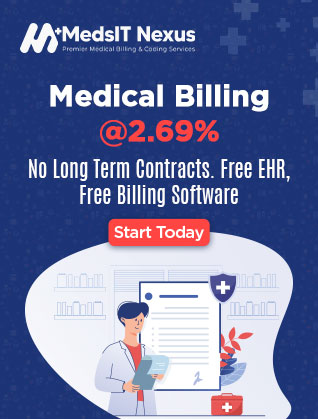
Claim Free Practice Audit
Practice better when everything works together.
- Medical Audit Services
- Medical Credentialing Services
- Medical Coding Services
- Medical Insurance Verification
- Patient Help Desk
- Reporting & Analytics
- --> --> -->